MortgageBanker MAGAZINE

‘JUNK FEE’ CRACKDOWN
CFPB ignites a cleaning spree
THE GSE ALERT
Understand Freddie Mac & Fannie Mae’s aggressive moves

CLOSE FOR LESS
Strategies to reduce loan process expenses
THE BLOCKCHAIN REVOLUTION

Experts point out what’s right, what’s wrong
SETTING SAIL

Off-Shoring Dilemma Balancing the Rewards with Perils

DATABANK MARKETS OCTOBER 2023 | $ 20
INNOVATION
A PUBLICATION OF AMERICAN BUSINESS MEDIA
Our commercial banking team can help you map the cash moving in, through and out of your business with next-level know-how. So, no matter which way it moves, you can be sure it’s moving you forward.

©2022 First Horizon Bank. Member FDIC. Let’s find a way. firsthorizon.com/capital Commercial & Specialty Lending Commercial Real Estate Treasury
Know-how that wastes you forward. no time moving
Management
REGULATORY CORNER
FHFA ANNOUNCES NEXT PHASE OF PUBLIC ENGAGEMENT PROCESS FOR UPDATED CREDIT SCORE REQUIREMENTS
The Federal Housing Finance Agency (FHFA) announced additional opportunities for ongoing public engagement to facilitate the transition to updated credit score models and credit report requirements for loans acquired by Fannie Mae and Freddie Mac (the government-sponsored enterprises). This engagement, which will include stakeholder forums and listening sessions, will allow for the identification of a wide variety of issues, opportunities, and challenges related to the successful implementation of the new requirements, including potential refinements to the timeline for adoption.
“This engagement process represents the next logical step in our efforts to ensure robust public input as we work towards implementing the new credit score requirements at the Enterprises,” said FHFA Director Sandra L. Thompson. “We want to hear from market participants and impacted stakeholders to ensure a smooth transition that minimizes costs and complexity.”
In October 2022, FHFA announced the validation and approval of both the FICO 10T and VantageScore 4.0 credit score models for use by the GSEs. The announcement followed a lengthy process of reviewing potential updates to the enterprises’ credit score requirements, as required by statute and regulation. During this time, the GSEs undertook rigorous testing of the models for which an application was received. Both of the newly approved models exceed the required thresholds for accuracy, reliability, and integrity. Following an extensive implementation process, the enterprises will require scores from both models, when available, on all single-family loans they acquire.
In October 2022, FHFA also announced that the GSEs would transition from a tri-merge requirement, in which credit reports are required from all three nationwide consumer reporting agencies, to a bi-merge requirement, in which credit reports are required from at least two of these agencies. FHFA expects this update will promote competition in the market while maintaining the information needed to support robust risk management. FHFA further expects that the implementation date for this bi-merge requirement will occur later than the first quarter of 2024, as was initially proposed.

STAFF
Vincent M. Valvo
CEO, PUBLISHER, EDITOR-IN-CHIEF
Beverly Bolnick
ASSOCIATE PUBLISHER
Christine Stuart
NEWS DIRECTOR
Keith Griffin
SENIOR EDITOR
Katie Jensen, Sarah Wolak, Erica Drzewiecki, Ryan Kingsley
STAFF WRITERS
Alison Valvo
DIRECTOR OF STRATEGIC GROWTH
Julie Carmichael
PROJECT MANAGER
Meghan Hogan
DESIGN MANAGER
Christopher Wallace, Stacy Murray
GRAPHIC DESIGN MANAGERS
Navindra Persaud
DIRECTOR OF EVENTS

William Valvo UX DESIGN DIRECTOR
Andrew Berman
HEAD OF CUSTOMER OUTREACH AND ENGAGEMENT
Mary Quinn
MULTIMEDIA PRODUCER
Matthew Mullins
MULTIMEDIA SPECIALIST
Melissa Pianin
MARKETING & EVENTS ASSOCIATE
Kristie Woods-Lindig
ONLINE ENGAGEMENT SPECIALIST
Regina Morgan ADVERTISING SALES EXECUTIVE
Nicole Coughlin
ADVERTISING ASSOCIATE
Lydia Griffin
MARKETING INTERN
If you would like additional copies of Mortgage Banker Magazine call (860)719-1991 or email info@ambizmedia.com
Submit your news to editors@ambizmedia.com www.ambizmedia.com
© 2023 American Business Media LLC. All rights reserved. Mortgage Banker Magazine is a trademark of American Business Media LLC. No part of this publication may be reproduced in any form or by any means, electronic or mechanical, including photocopying, recording, or by any information storage and retrieval system, without written permission from the publisher. Advertising, editorial and production inquiries should be directed to: American Business Media LLC 88 Hopmeadow St. Simsbury, CT 06089 Phone: (860) 719-1991
info@ambizmedia.com
Before Selling To Fannie And Freddie: Be Alert
GAIN THE EXPERTISE AND EXPERIENCE TO ANALYZE BASIC DECISIONS
BY ROB CHRISMAN , CONTRIBUTOR, MORTGAGE BANKER MAGAZINE
As we’ve moved through 2023, lenders everywhere are reporting increased buyback requests from Fannie and Freddie, who have become more aggressive. The general feeling is that lenders, who have been consistently losing money or breaking even this year, believe the government-sponsored enterprises (GSEs) are not being consistent with commitments made in recent years about materiality and options for remediation and have changed their quality control and sampling methodology. Lenders, which obviously include independent mortgage banks, are using staff time and resources, thus adding costs to a lender’s bottom line.
But for the last several years, Fannie & Freddie’s end-run around the large aggregators and marketing directly to the small and mid-sized lenders is well known in the industry.
Smaller lenders may not have the expertise or experience (yet) to analyze some basic decisions between selling loans directly to the GSEs (through the cash window) or securitizing loans themselves. It is helpful to have a primer on what that means and know what might be going on behind the scenes influencing decisions.


A PRIMER
ROB CHRISMAN
Freddie and Fannie’s more aggressive posture may be because they are concerned about the potential failures of some of their lender customers during these difficult times, and therefore, they would lose their counterparty to warranty defects on loans should they go to default.
In selling directly to the GSEs, lenders have the option to sell for “cash” or to “swap.” If you work in secondary marketing, you no doubt have been asked, at some point, whether it is more profitable to trade agency products for securities or for cash. Approved lenders have the business luxury of either swapping closed loans they originate for mortgagebacked securities or selling these loans directly to FNMA/FHLMC in exchange for cash (known as “cash window” sales).
There are some common misconceptions about cash window transactions and the collateral and prepay differences, if any, between pools securitized through the cash window and the MBS swap programs. It’s important to understand who uses the cash window option, why, and whether or not there are differences in pool characteristics.
When originators sell loans via the cash window, the GSEs aggregate the loans from a large pool of lenders and securitize them as an MBS; the cash window option allows both Fannie and Freddie to make shortterm use of their balance sheet without interfering with their current mandate of continued reduction in their retained mortgage investment portfolio.
Secondary marketing departments choose to sell in this fashion for speed and efficiency. The agency cash window typically alleviates warehouse line concerns, a problem that plagues many small originators, by way of faster fundings. Borrower retention is maintained as well.

MODEL CONTRIBUTORS
In the fast and furious days of 2020 and 2021, getting loans out the door and paying off a warehouse line was of paramount
4 MORTGAGE BANKER MAGAZINE | OCTOBER 2023
MARKETS
importance. Quality and QC checks may have taken a backseat to volume and keeping up with locks. Typically, smaller lenders selling their loans to larger lender aggregators sell servicing rights as well. The cash window allows smaller lenders to retain their customer base while allowing them to continue to originate new loans. Historically, smaller lenders had two options: sell their loans to FNMA/ FHLMC or sell to a large aggregator. As large aggregators have been closing the correspondent channel, small originators have become central contributors in the cash window securitization model.

Unfortunately, selling loans directly to Freddie or Fannie is a “two-edged sword.” The original price is probably better than selling to an aggregator (middleman), and the speed at which the purchase happens is often faster. In addition, a lender can retain the servicing. But lenders may want the cash from the servicing value (mortgage servicing rights), and dealing
directly with Freddie and Fannie eliminates a buffer in terms of buybacks. They go back to the entity that sold them the loan, in this case, an aggregator, who may have more success in rebutting the repurchase request.































I expect smaller lenders to continue to sell to FNMA/FHLMC cash-window desks given that larger lenders like Wells Fargo have scaled back on their role as aggregators. Consequently, it is likely that the percentage of pools securitized through the cash window will continue to increase if not stay at current elevated levels. Given the comparable collateral characteristics and increased oversight by the GSEs on participating lenders, we can add caveat venditor (seller beware) to caveat emptor (buyer beware).


MORTGAGE BANKER MAGAZINE | OCTOBER 2023 5
It’s important to understand who uses the cash window option, why, and whether or not there are differences in pool characteristics.
How To Do A Brand Audit

EVALUATE YOUR BRAND’S POSITION, STRENGTHS, AND WEAKNESSES IN THE MARKETPLACE
BY SCORE SPECIAL TO MORTGAGE BANKER MAGAZINE
Your brand is your business’s biggest asset — one whose health must be cultivated and monitored.
A brand audit is a checkup that evaluates your brand’s position in the marketplace, its strengths and weaknesses, and how to strengthen it. A brand audit should cover three areas:
1. Internal branding — your brand values, mission, and company culture
2. External branding — your business logo, print and online advertising and marketing materials, public relations, website, social media presence, email marketing, and content marketing
3. Customer experience — your sales process, customer support, and customer service policies

INTERNAL BRANDING
Your brand values, mission, and company culture
EXTERNAL BRANDING
Your business logo, print and online advertising and marketing materials, public relations, website, social media, email and content marketing
CUSTOMER EXPERIENCE
Your sales process, customer support, and customer service policies
MARKETING
“Clarify what you think your brand is before evaluating what others think.”
6 MORTGAGE BANKER MAGAZINE | OCTOBER 2023
You can hire an outside marketing company to conduct abrand audit for you, but you can also do much of it yourself. Follow these 10 steps for a successful brand audit.
STEP 1.
Know what you’re measuring. Refer to your marketing plan, and identify your business’s mission, vision, unique selling proposition, and positioning. Who are your target customers, and what does your brand promise them? Clarify what you think your brand is before evaluating what others think.
STEP 2.
Assess your external marketing materials. Review your business logo, brochures, sales sheets, product packaging, letterhead, business cards, and print advertisements. Compare them to your online presence, including your business website, email marketing messages and newsletters, social media profiles, and content marketing pieces. Are all of these elements consistent in terms of design, color, and tone of voice? How effectively does each piece target your intended market?
STEP 3.
Review your business website. Using website analytics, assess:
• Where is web traffic coming from? If all your traffic comes from one or two sources, you’re vulnerable to any changes to those sources; try to diversify.
• Is your website attracting your target market? More traffic is only valuable if it’s the right kind of customer.
• What is your bounce rate? If most visitors leave your site leave right away, it’s not as effective as it should be.
• What is your conversion rate? Is it rising or falling?
STEP 4.
Review your social media data. Use your social media analytics to examine how well your social media marketing is working. What types of customers engage with your brand on social media? Are they customers you want? What are they saying about your brand?
STEP 5.
Survey your customers.
Use a combination of customer focus groups, email surveys, social media polls, phone surveys, and online surveys to get customer feedback on questions such as:
• What words would you use to describe this brand?

• What problem does this brand solve?
• How does this brand make you feel?
• Would you recommend this brand to your friends and family?
• What does the brand’s logo make you think of?
• How good is this brand’s customer service?
• How could this brand improve customer service?
STEP 6.
Survey people in your target demographic who aren’t customers. This will measure your brand awareness. Using the survey methods above, ask questions such as:
• Have you ever heard of this brand?
• Have you ever used this brand?
• What do you know about this brand?
• How would you describe this brand to others?
• What problem does this brand solve for you?
• How does this brand make you feel?
STEP 7.
Survey your employees.
Your employees create the customer experience that is essential to your brand. If they don’t understand your brand, they can’t convey it properly. Use anonymous surveys to ask questions such as:
• How would you describe our brand?
• What is the brand’s vision?
• What problem does our brand solve for customers?
• How do you deliver on our brand’s promise? What keeps you from delivering on that promise?
• What one thing would you do to improve our brand?
STEP 8.
Evaluate your competitors’ brands.
Assess your biggest competitors’ marketing and advertising materials, websites, social media presence, and customer service. You can also ask customers, members of your target market, and even your employees the same questions about your competitors’ brands as you asked about yours.
STEP 9. Review your results.
Using the information you’ve gathered, document what aspects of your brand work, which need some finetuning, and which are missing the mark entirely. Then create an action plan for updating your brand to bring it in line with your business’s mission and vision.
STEP 10.
Monitor your progress.
As you complete each element of your brand update, review the results to ensure the changes are having the desired effect. Brands naturally become a bit stale over time. Repeating your brand audit every few years will keep your brand fresh.
This article was provided by SCORE, the Service Corps of Retired Executives. More information is available at SCORE.org.
MORTGAGE BANKER MAGAZINE | OCTOBER 2023 7
Don’t Get Blown Away By Climate Change



ASSESSING NATURAL DISASTER RISK DATA WILL BEST POSITION MORTGAGE SERVICERS
BY DONA DEZUBE SPECIAL TO MORTGAGE BANKER MAGAZINE
Lenders who focus on assessing natural disaster risk data and helping homeowners and homebuilders improve property resiliency will be in the best position to respond to climate change, according to a panel at the Mortgage Bankers Association Compliance and Risk Management conference in Washington, D.C.

What do we currently know about the influence of climate on residential housing? Rising temperatures drive different natural perils in different geographies, said panelist Kingsley Greenland, director, mortgage risk analytics practice at Verisk Extreme Event Solutions.
In Florida and the Gulf, rising water temperatures are a key ingredient in hurricane severity, though not frequency. In coastal areas, a rise in sea level has been observed and is expected to continue. On the West Coast,
increased evaporation has made the climate drier, a condition under which wildfires thrive.
Recent record natural catastrophe losses are as much due to population and property valuation growth as they are to peril severity, Greenland added.
HEADING INTO THE STORM
Interestingly, the U.S. is experiencing counterintuitive migration patterns with people continuing to move toward areas at higher risk of natural disasters, said Federal Housing Finance Agency (FHFA) Senior Policy Analyst Joe Weisbord. Homebuilders responding to that demand are increasing the number of homes in higher-risk areas. Meanwhile, regulatory-driven consumer protections have led to reduced insurance availability. If insurers can’t price the risk in an actuarily fair way, they’ll exit,
Greenland explained.
Taken together, these factors have all led to rising natural disaster costs, which in turn have caused insurance companies to raise premiums, pull out of markets, or implement coverage exclusions.
Increases in climate risks put lenders and servicers at risk in several ways. Originators can no longer assume borrowers will have modest homeowner’s insurance payments, while servicers may find borrowers unable to afford rising premiums. Natural disasters can lead to increased modification requests. A lack of insurance availability has overburdened state insurance funds of last resort, the panelists observed.
At the same time risks are increasing, lenders and servicers may soon be required to disclose more about catastrophe risks of the assets they hold.
8 MORTGAGE BANKER MAGAZINE | OCTOBER 2023
ANALYSIS & DATA
“The United States has imported the European regulatory structure, [Task Force on Climate-related Financial Disclosures] TCFD, which more or less requires financial institutions to measure and disclose their climate risk, which in residential real estate is natural catastrophe risk,” Greenland said. “Expect to have to measure this through a catastrophe model and disclose it to auditors or the public market, if you’re a publicly traded entity.”
An FHFA working paper released last month examined research on the interplay between climate change and residential real estate highlighting key research findings, Weisbord explained.

There’s a lot of uncertainty right now. Information asymmetries, differences in state insurance regulations, and federal disaster assistance all influence how consumers perceive risk and the value of

insurance, as well as how the market prices insurance, he explained.
“For example, research suggests many people may overvalue the amenities of being in a coastal area versus the risk of a hurricane or
flooding,” Weisbord said. “Climate risks are an agencywide concern and a top priority for [FHFA] Director [Sandra] Thompson.”
MONITORING MODS
Panelist Christopher Joles, senior vice president of enterprise and credit risk at Planet Home Lending, said his company closely monitors modification rates following natural disasters both in its own servicing portfolio, as well as for the loans it sub-services and assets it manages. While there’s often a postdisaster spike caused by homeowners waiting for insurance reimbursement or having difficulty finding a contractor to complete repairs, the increase should resolve. If it doesn’t, that’s a risk red flag.
Joles also predicted that we’re on the leading edge of having homeowners in high-risk areas facing large premium increases as they go through the
MORTGAGE BANKER MAGAZINE | OCTOBER 2023 9
“The U.S. is experiencing counterintuitive migration patterns with people continuing to move toward areas at higher risk of natural disasters.”
> Joe Weisbord Senior Policy Analyst, FHFA
annual insurance renewal process. “Premium sticker shock is going to come out of that,” he predicted.
As insurance companies pull out due to increased risk, an unexpectedly high number of people are being pushed to state insurers of last resort, including Citizens Property in Florida and the California FAIR Plan.
“Those companies are having to absorb unexpectedly high inflow of policyholders,” said moderator Andrew Hellard, vice president of product management, Matic Insurance. “Because those are taxpayer-backed companies, now you’re turning what was a market problem into a political problem. So, we’re going to see a lot of action in state houses in the next few months,” he predicted.
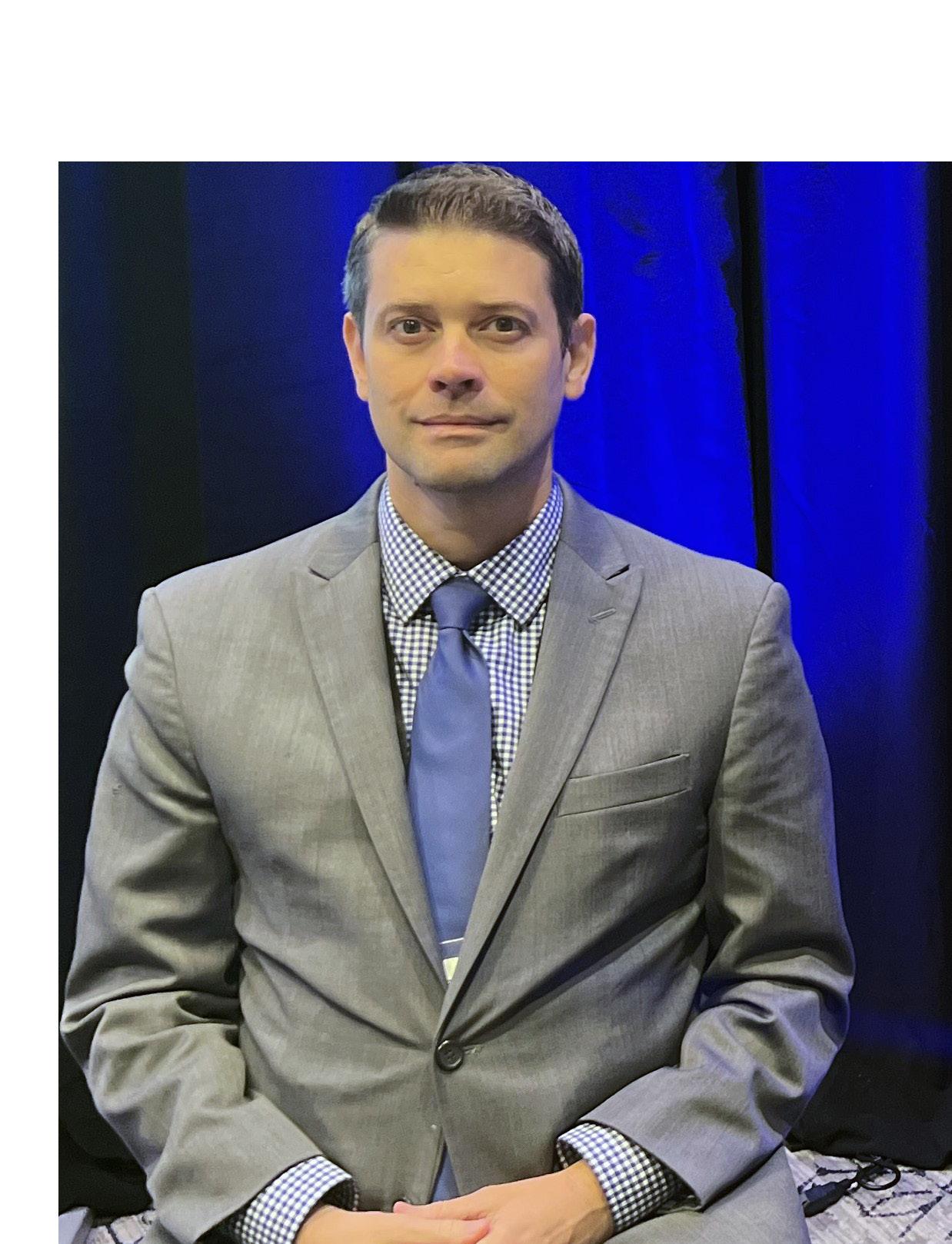
SERVICERS ON THE FRONTLINE


At a time when relatively high interest rates and low housing inventory put affordability under tremendous pressure, adding rising insurance costs makes homeownership harder to achieve for first-time homebuy-
ers, especially low- and moderateincome buyers, Hellard said.
The same risks are driving homeowner’s insurance policy exclusions. That’s an issue the industry will need to watch carefully to ensure the policies selected by homeowners continue to meet agency and government lending guidelines, he added.
“Servicers are on the front line of this issue,” Hellard said. “They’re responsible for monitoring that coverages are in place and working with homeowners who are unable to find coverage. We’re starting to see exclusions in homeowner policies. Those can be in direct odds with Fannie and Freddie requirements. It’s very easy to get out of compliance.”
Insurance company downgrades due to losses, while not related directly to climate, also have the potential to be disruptive.
In the final analysis, climate risk is likely to continue changing the real estate insurance environment drastically and swiftly. Lenders can best manage risk by staying abreast of key impacts such as the rising cost of coverage, changing risk profiles, increased frequency and intensity of natural disasters, availability of coverage, and adaptation of mitigation efforts to reduce exposure to climate risk.
10 MORTGAGE BANKER MAGAZINE | OCTOBER 2023
Dona DeZube is vice president, communications for Planet Home Lending.
“Servicers are on the front line of this issue. They’re responsible for monitoring that coverages are in place and working with homeowners who are unable to find coverage.”
> Andrew Hellard Vice President of Product Management, Matic Insurance
Andrew Hellard, vice president of product management, Matic Insurance (left) and Chris Joles, senior vice president of enterprise and credit risk at Planet Home Lending discussed how climate risk is changing the real estate insurance environment at the Mortgage Bankers Association Compliance and Risk Management conference in Washington, D.C.


MORTGAGE BANKER MAGAZINE | OCTOBER 2023 11 Join the Originator Connect Network for a fun and welcoming holiday party to celebrate the season, and celebrating the accomplishments of the mortgage origination community. Let’s all toast to good cheer, and to continued success! ORIGINATORCONNECTNETWORK.COM OCN Mortgage Holiday Party Dec. 15, 2023 | Irvine, CA Irvine Marriott Register FREE at: originatorconnectnetwork.com/ events/ocn-mortgage-holiday-party Use promo code NMPFREE style . Celebrate the season in *Complimentary registration available to NMLS-licensed active LOs and their support staff. Show producers reserve the right to determine final eligibility.
Cracking The Crackdown
HOW TO ELIMINATE AND PREVENT ‘JUNK’ FEES TO AVOID PENALTIES
BY ERICA DRZEWIECKI , STAFF WRITER , MORTGAGE BANKER MAGAZINE

It’s high time to get clean. Earlier this year, industry watchdog the Consumer Financial Protection Bureau (CFPB) clamped down on unnecessary, incorrect and illegal fees charged to consumers by mortgage servicers and banks. If they haven’t already, those that wish to avoid a bite and then a festering wound must review servicing portfolios and tidy up operations. Non-compliance, after all, can lead to monetary penalties, disciplinary action and distrust by partners and borrowers.
A cautionary bark, indeed.
FOUR WAYS TO GO WRONG
fees being targeted by this CFPB initiative and ways in which mortgage professionals can ensure they are following the rules.
To summarize broadly, the CFPB is now flagging (one) late fees higher than permissible by loan agreements, (two) extraneous payments stemming from unnecessary property inspections, (three) Private Mortgage Insurance (PMI) overcharges and (four) failure to honor CARES Act forbearances.
“This provides us with yet another opportunity to continue to assist our customer base with compliance through thought leadership and a variety of technologies to monitor and automate related processes,” Federspiel says of the ‘junk fees’ crackdown, adding, “What the CFPB is really targeting here is compliance more than intent.”
So whether they snuck in an extra payment or simply miscalculated the charge is irrelevant.
HOW TO COME CLEAN

Lenders should make sure their Loan Origination System (LOS) is set to the correct rate-fee cap within a loan agreement to avoid issuing inaccurate late fees.
Black Knight
Senior Vice President of Servicing Technologies and
Product Innovation Dana Federspiel identifies the four main
As a top provider of high-performance software, data and analytics solutions for the mortgage industry, Black Knight continually monitors regulatory technology and industry updates for their potential impact. Staff also meet with regulatory bodies like the CFPB to gather insights and share feedback with clients.
Ongoing property inspections to delinquent borrowers are often handled by third-party servicers, who charge the borrower. In certain cases the CFPB has found that servicers repeatedly sent property inspectors to the wrong address, charging the

REGULATORY
12 MORTGAGE BANKER MAGAZINE | OCTOBER 2023
Dana Federspiel Senior Vice President Black Knight
borrower in each instance.
Federspiel recommends companies perform a data quality check in their system for addresses that require regular inspection.
“In real estate there’s a saying - the number one rule is location, location, location,” she says. “For servicing portfolios and the management of these I would say the number one rule is data, data, data. The volume of data in this industry and access to it just grows exponentially each year. In order to review servicing portfolios, originators and servicers alike really need to have a trusted technology partner to provide best-inclass integrated solutions and more importantly, intelligent analytics. That allows them to spend their time focusing on the customer.”
Lenders typically require borrowers who put less than 20% down on a loan to purchase PMI, which can be dropped while the loan is still current and the principal balance reaches 78% of the property’s original value.
“This should happen automatically but in some cases it doesn’t,” Federspiel says.
To avoid PMI overcharges lenders should ensure their servicing system tracks loan activities and has the ability to determine when PMI should be terminated, then updating portfolios accordingly.

Finally, the federal CARES Act put into place during the covid-19 pandemic required servicers to waive specific fees and penalties for borrowers facing
a pandemic-related financial hardship. Those that received a waiver under the CARES Act are not required to pay back missed payments in a lump sum post-forbearance, no matter what they hear.
Federspiel encouraged servicers to set stops in their system to prevent fees from being charged in these instances and when evaluating for loss mitigation in arrearage.
FUEL TO THE FIRE
The CFPB received around 29,000 complaints related to mortgages last year, enough to provoke a crackdown.
One servicer identified in this year’s undertaking faced a $5.25 million penalty for misleading customers who requested forbearance about CARES Act repayment options.
Aside from an official retribution, servicers in violation can face retention and referral losses.
Staying apprised of developments like the CFPB initiative and looking out for the best interests of lenders are trade associations like the Florida Association of Mortgage Professionals (FAMP).
“We’re keeping a careful eye on making sure things are meeting compliance and regulations,” FAMP President Nathaniel Bittman says. “We’re educating a tremendous amount of licensed loan originators
and even some non-licensed LOs in the area of how to manage compliance, make sure they’re up to date with the right vendors, lenders, resources and tools so that they can advance forward in an ever changing technological association as well.”

Black Knight’s flagship product, MSP, manages loans after they’ve been turned over to servicers.
“We really do make sure we provide the flexibility and monitoring tools for our customers to stay compliant with the requirements coming down from the CFPB and other regulating bodies,” Federspiel says. “Some examples that can be put into play are monitoring solutions to identify anomalies or exceptions and potentially have automation for immediate correction of those exceptions that have been identified. Another recommendation would be to perform internal audit and data quality checks on a regular basis to ensure accuracy of the data you have inside the application itself, especially given that this industry tends to have movement of data.”
When servicing transfers between different providers, for example.
Performing regular internal audits can position companies within the confinements the CFPB has recommended with respect to fee management.
MORTGAGE BANKER MAGAZINE | OCTOBER 2023 13
Nathaniel Bittman President FAMP
“Having accurate data is what’s going to keep you from having any potential compliance issues associated with the fee management side.”
> Dana Federspiel Senior Vice President, Black Knight
“Originators and servicers need to work together,” Federspiel says.
It’s important to ensure that the terms reviewed by the customer in the contract have been automated so a system goes on to calculate fees accordingly.
“Having accurate data is what’s going to keep you from having any potential compliance issues associated with the fee management side,” she adds.
ANOTHER COMPLICATION
It’s no secret that times have been tough for LOs and mortgage companies, and introducing another zone for potential pitfalls doesn’t make anyone gleeful.
Linda Davidson, senior loan officer with Fairway Independent Mortgage, understands the challenge industry professionals can have getting their systems in line, necessary as it may be.


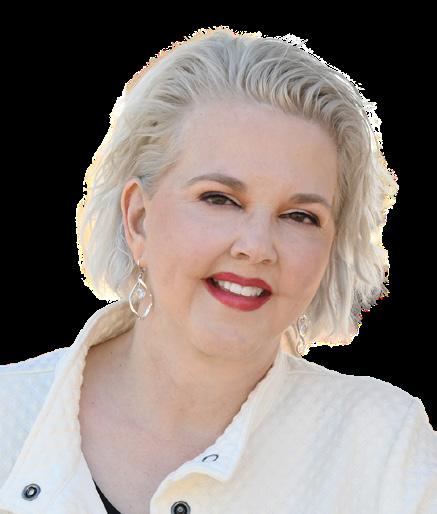
“We’ve never been big on junk fees…
but I can see where mortgage companies would have been using those fees just to basically shore up the bottom line,” Davidson points out. “And if they’re not charging those fees coupled with everything else that’s costing more I can certainly see where it would affect the bottom line and even viability of that mortgage company to stay in business. We’re seeing Freddie and Fannie be very strict; they’re kicking back more loans than we’ve ever seen them kick back.”
Maybe a slow-moving portfolio lends itself well to a checkup. So when better times shine down (and they will) systems will be set for takeoff.
14 MORTGAGE BANKER MAGAZINE | OCTOBER 2023
Linda Davidson Senior Loan Officer Fairway Independent Mortgage
“We’re seeing Freddie and Fannie be very strict; they’re kicking back more loans than we’ve ever seen them kick back.”
> Linda Davidson
Senior Loan Officer Fairway Independent Mortgage
HOME OF THE MOST POWERFUL WOMEN

THOMPSON KIM CALLAS TARA PETTERSEN
IN MORTGAGE
Financial proudly has more Powerful Women in Mortgage winners than any other company this year. Congrats to Tara, Kim, and Courtney!
60%
worked
to
WWW.CMGFI.COM
Risk & Compliance Officer EVP, Chief Operating Officer EVP, Head of Servicing CMG Mortgage, Inc. dba CMG Home Loans, NMLS# 1820, is an equal housing lender. Licensed by the Department of Financial Protection and Innovation (DFPI) under the California Residential Mortgage Lending Act No. 4150025. To verify our complete list of state licenses, please visit www.cmgfi.com/corporate/licensing and www.nmlsconsumeraccess.org. 3 WINNERS IN 2023
COURTNEY
CMG
All three women are members of executive leadership. We’ve worked hard to cultivate a culture that’s over
women. We’ve
harder
make sure these women reach the highest levels of success.
Chief
OCT 26
Hear From Industry Leaders As We Peek Under The Hood Of Non-QM.


UP NEXT:
The State of Non-QM

Non-QM has seen its share of ups and downs over the past several years. But one thing is certain. As one of the only growing niches in the mortgage business, keeping up to date on this space is more important than ever. Serving the underserved community, non-QM is an essential part of the mortgage ecosystem. And with the number of borrowers non-QM serves continuing to rise, now is the time to learn more about these products.
NMP is launching a monthly series called “Non-QM Townhall – A Monthly Report”. We will cover different topics each month with a panel of experts in non-QM. They will share their knowledge and experience so you too can become a non-QM expert.
COMING SOON:
November 16
The State of Non-QM (current state of the sector, where are the biggest opportunities)
Finding These Borrowers
December 14
Prospects for 2024 programs, state of nonQM, what’s coming, how to prepare


16 MORTGAGE BANKER MAGAZINE | OCTOBER 2023
ROBERT SENKO ACC MORTGAGE
TOM DAVIS DEEPHAVEN
JOHN WISE NEWFI WHOLESALE
the webinar schedule and register to attend: nmplink.com/NQMTownhall
Check
Fewer Dollars To Close
IMBs WEIGH IN ON FINDING SAVINGS IN THE LOAN PROCESS

To enjoy the expense of turtle soup occasionally, one often has to work on a beans-and-rice budget. Especially when production and volume are down, costcutting can be necessary to perpetuate success in business and fulfill obligations - or personal tastes.
Mortgage professionals know this all too well.
Loan volume declined for nine consecutive quarters as of Q1 2023, right alongside four consecutive quarters of production losses, according to the Mortgage Bankers Association. Independent mortgage banks (IMBs) reported a pre-tax net loss of $534 on each loan they originated during Q2 2023, an improvement from Q1, when losses hit $1,972 per loan.
This information comes by way of the MBA’s newly released Quarterly Mortgage Bankers Performance Report. The findings also indicate that 58% of companies were profitable in Q2, up from 32% in Q1 and 25% in Q4 2022. However, Fannie Mae reported in August that single-family mortgage
origination volumes in the overall market were about 35% lower than the same time last year.
IMBs and mortgage subsidiaries of chartered banks are now finding ways to cut costs in places they never have before.
58% > Percentage of companies profitable in Q2 according to the MBA’s newly released Quarterly Mortgage Bankers Performance Report.
‘CRAZY EXPENSIVE’
Times were good. “When you’re making money and business is flowing, you don’t really look at it as clearly as you could,” says Linda Davidson, senior loan originator at Fairway Independent Mortgage. “When the market shifts,
that is when leadership should rise to make those decisions. What can we do better to manage expenses?”
The National Credit Reporting Association (NCRA) announced the pricing structure of credit reports would rise up to 400% this year. While borrowers are typically responsible for the cost of a credit pull, it’s up to the lender to absorb when applications are canceled or denied.
The cost to verify an applicant’s employment in order to issue a preapproval also has risen.
“Just those two things alone have been crazy expensive,” Davidson points out.
“Your verifications can be $100-$150 depending on how difficult that file is, and you may or may not ever close that loan.”
High interest rates, simultaneously low inventory, and “hairy” loans have become commonplace.
“Right now it seems like every single loan has hair on it,” Davidson says. “There’s not a lot of perfect 20%-down, 820-credit score borrowers. Those do not exist right now, and if they do
MORTGAGE BANKER MAGAZINE | OCTOBER 2023 17
BOTTOM LINE
BY ERICA DRZEWIECKI , STAFF WRITER MORTGAGE BANKER MAGAZINE
they’re rare and far between. So you’re spending a lot of man hours on those (hairy) loans, and that’s another cost you have.”
Then with inflation, there have been increases in payroll, rent, and utilities for lenders running offices, retail branches, mortgage banks, and brokerages.
“Everything we do has gone up, but our revenue has gone down, so that’s why you’re seeing the mergings, the shutdowns,” Davidson says. “If companies have not set money aside and prepared for this type of season, they’re not going to be able to sustain until the market shifts.”
As a top-producing branch manager and LO for almost 28 years, a large part of her focus is mentoring other industry leaders through professional development workshops.
“I get the wonderful benefit
of being able to talk to a lot of people from lots of different companies. Everyone is struggling right now, whether it’s an IMB, a broker, or a depository,” Davidson says.

She counsels fellow executives to pull from their experience and, when necessary, reserves.
“There’s no manual someone picks up in leadership. You look at your reserves versus what is needed. What is the best next right thing? That’s what you do.”
ONE NEXT RIGHT THING
Snapdocs Vice President of Customer Success Todd Maki has identified significant savings in closings through fintech.
“We’ve conducted a deep dive with over 25 of our lender customers and have identified a hybrid closing can save customers on average over $110 per loan due to operational and secondary market efficiencies,” Maki explains. “That savings increases to over $290 per loan when the hybrid closing has the addition of an eNote.”
In mortgages, an eNote is essentially an electronic promissory note detailing repayment terms, which serves as a binding agreement between lender and borrower.
Other closing documents, such as a certificate of title, deed, and bill of sale, can also be signed remotely. The “hybrid” model involves a combination of digital and ink signatures.
Lenders store eNotes in eVaults, secure electronic systems in digital lending. There are a lot of eVault providers registered with the Mortgage Electronic Registration System (MERS) that tracks the owners and servicers of U.S. loans. Vendors also should be compliant with the Mortgage Industry Standards Maintenance Organization (MISMO) and
the government-sponsored enterprises (GSEs).
Between the real estate agent, borrowers, lender, third-party servicers, attorneys, and others, many parties are involved in a loan transaction from start to finish. And all of them must sign off.
“The closing process requires a lot of coordination across dozens of different parties,” says Maki, who manages the team that directly serves SnapDocs’ lender-customers. “We’re focused on multiparty defragmentation.”
Specialized software allows documents to be created, reviewed, signed by multiple parties and stored in a secure, remote network. This translates to an immediate savings of ink, fuel, time, hassles, and money.
“Tech is a line item in a lender’s business, but where we see the value of tech is driving efficiency in terms of how lenders do business,” Maki says. “Even with technology being more and more pervasive every year in the mortgage industry, there remains significant opportunity for efficiency and cost reduction because many of the technologies in the space serve a point purpose. It’s the fragmentation across the different entities and people involved that creates inefficiency.”
CONTROL OVER EXPENSES
But tech isn’t the only place to find savings. People also can find savings on their own.
“There are still going to be costs no matter what you do,” Davidson says. “Every smart mortgage lender has gone in and said, ‘OK, let’s identify what things we can do to help keep costs down.’ We have five things that we call expenses we can control. We’ve identified those, and we talk about them every single month. This is what we spent, this is what we spent last year … that way you’re seeing the savings.”
Small changes can add up over time -- pennies in a jar transforming into dividends.
Among Davidson’s suggestions for controlling expenses is an alternative to ordering Verifications Of Employment (VOE) during the pre-approval. Instead, she says, ask applicants for pay stubs representing each of the last
etc., but they are cheaper for a glance upfront before you go into the other expenses you need for underwriting,” Davidson says.
While the phrase “a reduction in force” is not one anybody wants to hear, this is a primary way companies cut costs during hard times.
When staff positions are eliminated, appropriate delegating of resources and staff can mean the difference between stamina and shutdown.
“A lot of companies are sharing processors between branches,” Davidson says. “Maybe one branch had to do a force reduction and a different branch has the capacity to handle another 15 files. They can pay a fee per loan versus hiring someone else.”
THE BIG PICTURE
Every industry has seasons and markets. Putting away savings in reserve funds during better times ensures an industry professional doesn’t crash and burn, at least right away.
few years to find out what they made, broken down over time. Then at least the official VOE is only an endgame before closing.
Additionally, some companies are employing soft versus hard credit pulls, a cheaper, though limited, option.
“You can’t run automation approvals,

“As we say in the South, we’re buckling down and honing on what we can, but being really wise on how we share resources with each other, looking at the big picture and what can be done,” Davidson says. “Even in biblical days, Joseph was a leader and he knew there was a famine coming, so he stocked away the grain so that they could have it during lean times. It’s the same concept. Whether it’s back 2000 years ago or today, good leadership has the foresight to say, ‘What can we do right now to hold us off when the market shifts?’”
While the fingers of mortgage lenders have been crossed for a more lucrative market in Q4, some might still depart 2023 empty-handed.
As Davidson predicts, “It will be next year before we see the righting of the ships again.”
MORTGAGE BANKER MAGAZINE | OCTOBER 2023 19
“Tech is a line item in a lender’s business, but where we see the value of tech is driving efficiency in terms of how lenders do business.”
> Todd Maki Vice President of Customer Success, Snapdocs




20 MORTGAGE BANKER MAGAZINE | OCTOBER 2023 Get what it takes to JAN 12 UNCASVILLE, CT Mohegan Sun Resort & Casino nemortgageexpo.com Attend for free by using the code MBMFREE




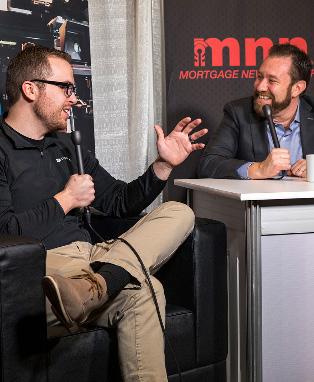
MORTGAGE BANKER MAGAZINE | OCTOBER 2023 21 Find a mortgage event near you. For mortgage brokers, originators, processors, underwriters, and anyone looking to grow within the industry. originatorconnectnetwork.com/events
2000 attendees in 2023, you won’t want to miss this opportunity to be a part of New England’s largest and most exciting mortgage event — the New England Mortage Expo. Join your peers for an exiting day of networking, product showcases, educational sessions, motivational speakers, and so much more!
The nation’s largest regional event is back. With over
A Quest For The ConfoundedDigitally

BLOCKCHAIN MIGHT HAVE A TRANSFORMATIVE POTENTIAL FOR THE FUTURE
 BY ERICA DRZEWIECKI , STAFF WRITER MORTGAGE BANKER MAGAZINE
BY ERICA DRZEWIECKI , STAFF WRITER MORTGAGE BANKER MAGAZINE

TECHNOLOGY
Nearly 300 years after potters began using the wheel in 3500 B.C. it was fashioned into a perpetual motion device to carry chariots, eventually evolving into the mechanism of transportation that it is today.
It’s only been 15 years since a mysterious faction known as Satoshi Nakamoto introduced the cryptocurrency Bitcoin and the concept of blockchain to the world, allowing individuals to reclaim financial power from the elite by participating in a decentralized public banking system.
This ledger-type technology is linked via a peer-to-peer network of computers, preventing a digital coin from being spent more than once. Some say this stops fraud, others aren’t so sure.
The most popular use case of blockchain has been cryptocurrency. There are now more than 22,000 crypto projects in existence, according to a June 2023 report by Forbes. The top cryptocurrency based on market capitalization (the total value of coins mined) is still the original Bitcoin, at $570.2 million.
Even with this rapid growth, blockchain technology hasn’t yet had the profound impact on our financial system that analysts predicted it would. Mortgage Banker spoke with mortgage and banking system experts, who have mixed thoughts on the future of cryptocurrency as a tool of
TITLE INSURANCE
The question of whether or not blockchain will eliminate the need for title insurance began surfacing in housing and money media at least six years ago. Financial analysts had high expectations for blockchain to revolutionize the industry and this was an area of particular interest.
But all that hasn’t quite happened yet and the experts aren’t even so sure it will anymore.
“I’ve seen over the years how blockchain could disrupt the industry,” says Jeremy Yohe, vice president of communications for the American Land Title Association (ALTA). “Blockchain is, to simplify it, a different way to store data. But any way you store it, there’s still gonna be that threat that it could be hacked, it could be altered, it could be stolen, it could be changed, it could be fraud.”



Since its founding in Washington, D.C. in 1907, ALTA has been a resource for title and settlement companies. The organization now represents more than 6,000, and ALTA title insurance remains the industry standard for lenders and homeowners.

“At the end of the day, you still need a backstop to protect your property rights. And title insurance is the best option to protect these rights,” Yohe says. “Without it lenders would be taking on a lot more risk and they would have to price their products accordingly.”
A homeowner’s title insurance policy is optional, but also the only product that protects borrowers’ property rights for a one-time fee. In an ownership dispute, for example, the title company representing the policyholder covers all court costs, attorney fees, and a settlement, if applicable.
Borrowers can fall in love with a property and secure financing, but then it takes some
MORTGAGE BANKER MAGAZINE | OCTOBER 2023 23
“Blockchain is, to simplify it, a different way to store data. But any way you store it, there’s still gonna be that threat that it could be hacked, it could be altered, it could be stolen, it could be changed, it could be fraud.”
> Jeremy Yohe, ALTA
Communication s, A L AT
detective work before the title or proof of ownership is effectively transferred to their hands.
“That’s when our people step in,” Yohe explains. “The title agent is searching the public records to see if there’s any red flags that need to be addressed before the transaction can proceed. There’s a lot of strange things across this country that give people access to properties.”
A century-old easement for a portion of the front yard, for example, or a utility line preventing the property owner from digging the summer oasis of their dreams.
Much of that information is still in paper form - in government buildings, library archives and elsewhere. What and where is it not? A block on a chain. That’s not to say this facet of the industry has not progressed with the times.
“Not everything can be done in a day, but the title industry has made significant strides to use technology to expedite the process,” Yohe says. “It’s modified products over the years to provide lenders the type of efficiency and coverage they may need on a mortgage, on a refinance, on a HELOC, on a home equity. And at the end of the day, it gives the lender peace of mind that they’re protected, that they have first lien priority.”
This past spring ALTA modified its industry best practices to include risk mitigation driven by modern contrivances like digital payments and blockchain. For example, it is now recommended that title companies use a wire verification service to ensure funds found their place in the correct account.

ALTA is also backing federal legislation to permit remote online notarization nationwide.
“We really think the government should provide a pathway to continue to allow the industry to use technology that maintains a standard of safety and security for con-
sumers and service providers,” Yohe says. “A lot of situations may make it difficult to have the flexibility to sign documents. Not to say that it’s going to replace the entire process, but it’s an option to give consumers if they want it.”
In 2023, there are 43 states that have adopted some degree of permanent Remote Online Notarization (RON) laws.
AMERICA ONLINE
Norman Roos, partner at Robinson+Cole Finance Group in Connecticut, has been working in the mortgage industry for the last 50 years. In that time he’s gained extensive experience in electronic contracts, digital signatures and online servicing. Around the turn of the last century, he convened a task force to consider the adoption of electronic recording in Connecticut. To this day, the Puritan-settled New England state still has not permitted remote notarization.
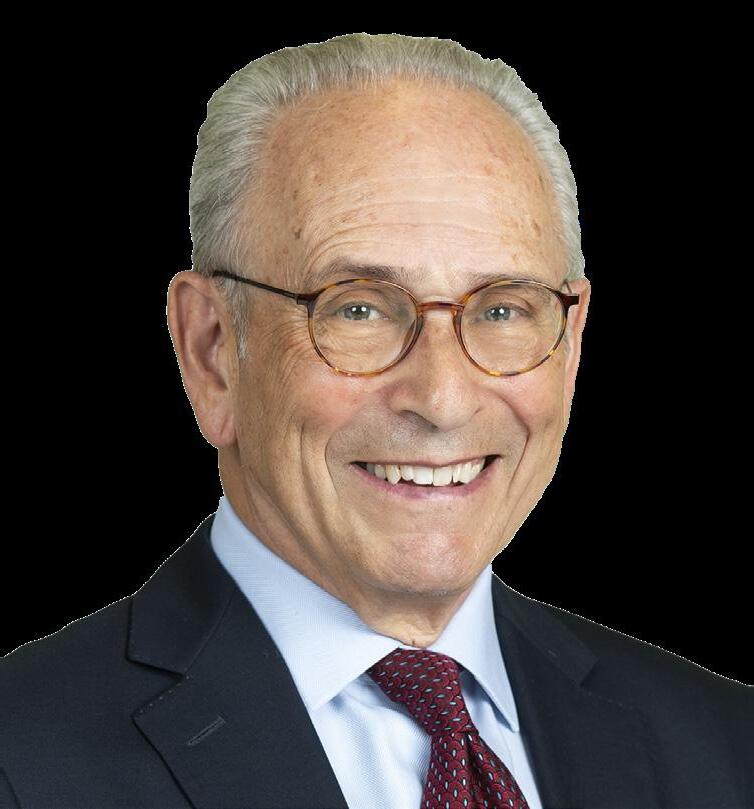
“There’s a difference between blockchain and digitization of services,” Roos points out. “When you look at the technological impact on the mortgage industry so far, largely blockchain hasn’t played a role. It was a brilliant idea and it has had a number of successful use cases. I don’t think blockchain is going to transform the mortgage industry anytime soon.”
He means residential lending specifically, the most heavily regulated sector.
“A home is probably the biggest purchase you’ll ever make. It’s a very large, very important transaction. And it’s highly regulated because the potential for abuse or for problems if things don’t go well is enormous.”
Just like when many people thought they understood collateralized debt obligations before the 2008 financial crisis, Roos recalls, only to find out they were duped by the complex asset-backed security (ABS).
“This tool, which was thought to be a very efficient tool, turned out to be terribly misused. I think with blockchain, while it’s not the same … I don’t know anybody who really understands it.”
Those who have delved into the intricacies of this still-unregulated arena may have also heard the term stablecoin. It is a digital currency that obligates its issuer
24 MORTGAGE BANKER MAGAZINE | OCTOBER 2023
Cole Financ ia l G r uo p
anRoos, Partner at Robin
to convert each unit of token into $1 upon demand.
“Unlike bank deposits, stablecoins are not regulated, and the way they report the assets backing their liabilities is very different from that of a bank,” said economist Daniel Sanches in a report for the Philadelphia Federal Reserve.
REGULATORY HURDLES
The fact that there is no centralized hub for blockchain is perhaps its most valuable asset as well as the highest hurdle to wider use by mortgage industry professionals.
“When you go to a bank, you see this big building with pillars in front of it. And presumably the money would be there because it’s a trusted institution. There were regulators who made sure it acted in a safe and sound manner,” Roos says. “The idea with this distributed-ledger system is that there is no central authority to whom you can look if something goes wrong. I think for reasons of lack of transparency, lack of accountability … there’s going to be a reluctance to use blockchain widely or immediately in a lot of different applications. I may be proven wrong, but that’s my suspicion.”
Insurance and mortgage are highly regulated industries. The Truth in Lending Act (TILA) and the Real Estate Settlement Procedures Act (RESPA), known together as TRID, is a series of rules enforced by the Consumer Financial Protection Bureau (CFPB). Lots of time, money and resources were invested by financial companies to ensure compliance and good business practices with the passage of these and other laws.
“If a mortgage company decided they want to create their own blockchain and operate their origination or servicing system using blockchain, I think they would get a quick visit from their regulator, be it the Department of Banking or some other regulatory agency,” Roos points out.
Most people don’t know the inner workings of the car they drive, but trust its basic safety after obtaining insurance and registration, and have some idea of where to go if it needs repairing.
“Who’s gonna perform that role for blockchain? It takes care of itself, right?” says Roos. “I’m very interested to see if it
can be applied in a broader manner, but I’m not confident that will happen anytime soon.”
THE WAY IT’S ALWAYS BEEN
As a regulatory lawyer in financial services for most of his career, Roos has watched tech evolve and knows industry changes are inevitable.
“I just don’t know that blockchain, which is one technological tool essentially, is going to be driving that change,” he says. “I think technology can be very helpful to streamline the processes, cut costs, and provide better services. But I think we just have to be careful about it. There are some limitations of blockchain and it’s a little opaque to most people.”

As long as public records were kept, real estate transactions, property transfers and deeds have been recorded in local government offices, with times stamped and fees paid. Homeowners owe taxes to the county or municipality in which they reside, after all.
Thousands of these recording offices exist across the U.S. and each has its own processes and practices. However, even as technology progresses, the manner in which a homeowner registers their property has not changed.
“In this day and age, they still continue to do things the way they did it many years ago,” Roos says. “And everybody likes to do it their own way.”
Instituting a single recording office for say - the entire U.S - might eventually prove more efficient, but it would also be quite an undertaking.
With that said, energy efficiency is one of the world’s top priorities right now and the blockchain mining process demands high energy consumption. Bitcoin alone is estimated to consume 127 terawatt-hours (TWh) per year, which is more energy, electricity and heat than many countries.
While technological advancements continue to deliver new solutions to the mort-

MORTGAGE BANKER MAGAZINE | OCTOBER 2023 25
P
Mortg a g e S o l u t i sno
ampbell, Founder of Equil
gage industry, will blockchain be a gamechanger?
“I don’t consider it up there with the invention of fire or the wheel,” Roos says.
Equilibrium Mortgage Solutions founder Paul Campbell has higher expectations.
25%
“Blockchain represents the ability to omit specific pieces of data and still have a grasp on the entire flow of a loan,” says Campbell, who is also executive vice president of lending at Kwik Mortgage. “It gives individuals the ability to work on separate pieces and then holistically allows the system to put it all together, which I think in the long run is going to create efficiencies and reduce fraud, identity theft and things of that nature. I see blockchain as it continues to mature, to be a tremendous tool to the financial services industry and that includes home mortgage.”
THE STUDIES
Only one-quarter of lenders surveyed in 2022 by Fannie Mae told the enterprise they were familiar
with blockchain technology and its possible applications in the mortgage business. Of the 20% of lenders that said they have looked into blockchain, 41% plan to adopt it within four years. Although familiarity with blockchain still seems low among industry professionals, about 40% of study respondents said they believe decentralized finance - what defines blockchain - has high to very high potential to disrupt incumbent financial institutions.


Whether or not blockchain will cause a small rift in the mortgage industry or a collision equivalent to the impact of a large asteroid appears to be up to lawmakers and regulators.
Congress is now working to expand its crypto industry oversight by defining the jurisdiction of the Commodity Futures Trading Commission and Securities and Exchange Commission.
The SEC has stated that most cryptocurrencies are securities and subject to investor protection rules, a claim disputed by most crypto companies.
26 MORTGAGE BANKER MAGAZINE | OCTOBER 2023
Amount of lenders in survey familiar with blockchain technology.
Appraiser Independence Update: What You Need to Know
In August 2023 Fannie Mae and Freddie Mac released an update to their Appraiser Independence Requirements (AIR) and FAQs. These updates provided significant clarity to the requirements for selecting appraisal vendors during the loan origination process. The most important updates were:

1. Appraisal Management Companies (AMCs) were included in the definition of “Independent Party.”
This is an important distinction. It has been largely held that AMCs could provide the layer of separation between the sales and mortgage production functions from the appraisal functions. However, with this clarification and inclusion there must now be a clear separation between the parties involved and originators cannot directly engage the AMC of their choice. This is likely to cause some operational issues within many mortgage companies.
2. Lists of approved Independent Parties can only be created by non “Restricted Parties”
It has largely been held that it is okay to recommend a panel or list of appraisers or AMCs that can be rotated through and that those parties aren’t guaranteed a specific assignment. The updates however clarify that while lists can still be kept, the lists must originate from outside the mortgage sales and production staff or the “restricted parties.” This is a significant change and one that will require compliance departments to get a handle on what lists are out there and how they came into existence.
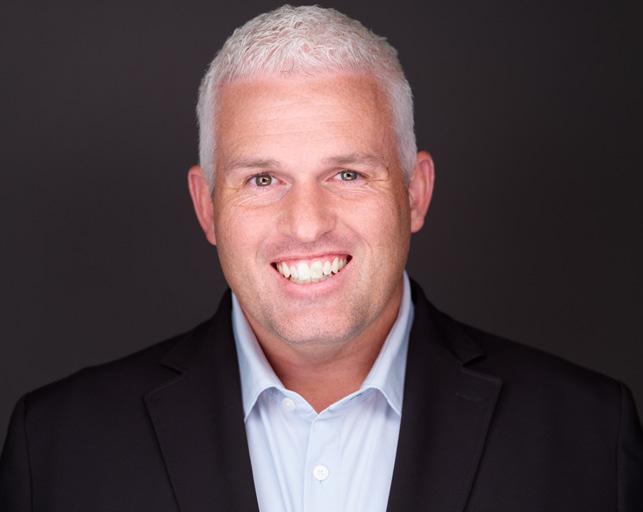

3. Compliance with AIR will be audited as part of each GSE’s operational review. AIR will be validated and looked at during upcoming audits. Lenders must have in place a process that can be validated and
tracked for complete AIR compliance. Additionally, lenders are responsible for ensuring that their third parties are also compliant with the AIR requirements.
These Changes Are Good for the Appraisal Industry
Appraisals have long been the bane of the loan process and for some realtors the greatest fear in a residential transaction. However, truly allowing the industry to move to the independence it needs will allow for the industry to transform to deliver a better, quality, and faster product.
Speed: Preferred lists create inconsistency in speed in the appraisal process. Lenders with preferred lists see on average a 4-8 business hour delay in getting their orders accepted by an appraiser due to the inefficiencies with being limited to which appraisers you can assign the order. By allowing appraisal desks and appraisal management companies more flexibility to find the right appraiser, we can bring more consistent turn times to everyone.
Quality: Preferred lists have a place when it comes to quality. However, the preferred lists should be transferred over to a “verified” list where the selection of an appraiser considers the skills of the appraiser and their ability to complete a given assignment.
In a recent analysis we performed on SSR data returned by the GSEs as a part of the appraisal review process, we identified preferred appraisers that were 4 times more likely to receive a warning for overvaluation and twice as likely to receive warning for appraisal quality. These preferred appraisers were also half as likely to
come in below purchase price as their counterparts. Removing preferred lists also allows appraisers to develop special niches within the appraisal world to differentiate themselves and build a better business. Not every home is a cookie cutter appraisal and by eliminating this aspect appraisers can find ways to work with lenders to become their experts in tough conditions and markets.
Accountability: The existing marketplace for appraisal doesn’t allow for much accountability with the vendors participating in the space. Given that much of the selection of the appraiser has largely been driving by the production teams, it has been easy to pass off blame to the limitations set forth by those teams. As the appraisal industry moves to improve these processes and force those selecting the appraiser to become better vendor managers, we will see much more accountability in the processes developed around quality, measurement, and continued assignments of appraisers.
Recommendations
Embrace the change that should accompany these updates. Understand that the best thing you can do moving forward in the appraisal space is hold your vendors accountability for delivering quality and speedy appraisals. Partner with the companies that are doing the best in these areas and understand that there is a lot more to appraisals than getting it returned ASAP.
Better yet, visit us at tryjaro.com and see how our platform can help you manage all these aspects of the process and more at any point in the appraisal journey.
SPONSORED EDITORIAL
Gareth Borcherds Managing Director at Ascent Software Group
Arc Home LLC
Mount Laurel, NJ
Multi-channel mortgage leader with exceptional service and comprehensive mortgage solutions. When it comes to choosing your lending partner, there are many things to consider. Our products set the standard in the industry for innovation. Since that innovation is in our DNA, we will always be on the cutting edge of what matters most to you and your borrowers. At Arc Home, our priority is to provide the best customer experience from registration to closing, and we continue to invest in that philosophy every day.
business.archomellc.com
(844) 851-3600
sales@archomeloans.com
LICENSED IN: AL, AK, AZ, AR, CA, CO, CT, DC, DE, FL, GA, ID, IL, IN, IA, KS, KY, LA, ME, MD, MA, MI, MN, MS, MO, MT, NE, NV, NH, NJ, NM, NY, NC, ND, OH, OK, OR, PA, RI, SC, SD, TN, TX, UT, VT, VA, WA, WV, WI, WY
NON-QM LENDER RESOURCE GUIDE
We’re invested in your growth.
Carrington Wholesale
Dallas, TX
The Carrington Advantage Series is a full suite of Non-QM Loan solutions that “Delivers More” for you and your borrowers. Ideal for borrowers, like the self-employed, that don’t fit Agency or Government Qualified Mortgage standards based on credit quality, property type, documentation type, income documentation, or other borrower situations.
• FICOs 550+
• Primary wage earners FICO

• DTIs up to 50%
• Bank Statements (personal or business) accepted
• We don’t require disputed tradelines to be removed
With the Carrington Investor Advantage (DCR)
• DCR down to .75
• First-time investors are ok
• Only 48 months seasoning for major credit events
• 1x30x12 mortgage history ok
(866) 453-2400
carringtonwholesale.com

LICENSED IN: 47 States (excluding NH, MA & ND.)
Directory Listings
Be available when your clients go looking. Directory listings ensure your company is accessible when your clients are looking for you. Your listing includes:
• 6 or 12 month options
• Your active listing highlighted in the monthly special feature
28 MORTGAGE BANKER MAGAZINE | OCTOBER 2023
MORTGAGE
MAGAZINE
BANKER
RESOURCE GUIDE
WAREHOUSE LENDING RESOURCE GUIDE
APPRAISER & AMC RESOURCE GUIDE
PRIVATE LENDER RESOURCE GUIDE
FirstFunding, Inc. Dallas, TX
Offers warehouse lines to correspondent lenders, community banks, credit unions, and secondary-market investors.
*Ease of use (Support staff, technology an other tools to support mortgage bankers)
FirstFunding’s FlexClose Funding program allows our clients to fund outside the Fed wire restrictions. Same day and afterhours funding. Browser-based proprietary platform, customized reporting tools, and a dedicated customer service team.
Conventional Conforming, Jumbo, FHA, VA, USDA, Non-QM
(214) 8217800
firstfundingusa.com

LICENSED IN: CT, DC, DE, FL, GA, IL, MD, MA, NH, NJ, NY, NC, OH, PA, RI, SC, TN, TX, VA
Clear Capital Reno, NV
Clear Capital is a national real estate valuation technology company with a simple purpose: build confidence in real estate decisions to strengthen communities and improve lives. Our commitment to excellence is embodied by nearly 800 team members and has remained steadfast since our first order in 2001.
clearcapital.com


LICENSED IN: AL, AK, AZ, AR, CA, CO, CT, DE, FL, GA, HI, ID, IL, IN, IA, KS, KY, LA, ME, MD, MA, MI, MN, MS, MO, MT, NE, NV, NH, NJ, NM, NY, NC, ND, OH, OK, OR, PA, RI, SC, SD, TN, TX, UT, VT, VA, WA, WV, WI, WY
Alpha Tech Lending West Hempstead, NY
DSCR Rental NO DOC Loans
Alpha Tech Lending is a trusted direct lender, with over a combined 30 years of experience in the private lending sector. We offer a variety of loan programs for non-owner-occupied residences that are customizable to suit your real estate investment needs. From fix and flips, long term rental, new construction, commercial bridge, and more. We lend to both new and experienced real estate professionals throughout the country. We value long term relationships built on trust. Our brokers are protected.
alphatechlending.com
(888) 276-6565
info@alphatechlending.com

LICENSED IN: CT, DC, DE, FL, GA, IL, MD, MA, NH, NJ, NY, NC, OH, PA, RI, SC, TN, TX, VA
Your listing comes with an enhanced online profile, which includes:
• Company name, logo, & description
• Contact phone, email, social accounts, & location
• All directories your company is listed in
• Latest 3 mentions in articles on our site
• Latest 3 webinars hosted by your company (if applicable)
Prices are subject to change. Pricing is not guaranteed until a contract is formed.
MORTGAGE BANKER MAGAZINE | OCTOBER 2023 29
ambizmedia.com/resource-guides
Sailing New Seas


WEIGHING THE BENEFITS AND RISKS OF OFF-SHORING
BY ERICA DRZEWIECKI , STAFF WRITER , MORTGAGE BANKER MAGAZINE
When British sailors set sail to dominate the world, they carefully planned and prepared. However, they
discovered that challenges could unfurl –- a sudden dark, cold mist could befall their ship or pirates could attack at a moment’s notice.
Bravely departing their homeland for new soil, mortgage companies are following suit, educating themselves on foreign doctrine and tying up loose ends before planting roots overseas. Like the sailors, they face unknown challenges, too.
WHERE AND WHAT
Statistics indicate that most of the top 25 lenders and top 50 servicers are currently handling some if not all business overseas. In many cases this is
limited to specific servicing functions.
“Our world is becoming more interconnected, and I only see that continuing,” says James Brody, senior partner at Garris Horn LLP in Irvine, Calif., regulatory compliance counsel for depositories, independent mortgage banks (IMBs) and credit unions.
“When we get involved generally with outsourcing-related issues on the legal end, it’s trying to help our clientele build up safeguards, whether through contractual issues or contractual agreements, navigating what the risks are in the legal environment of the outsourced country, how easy is it or how difficult would it be to address these problems,” Brody says.
Much of the mortgage industry’s servicing now takes place in countries like India, Malaysia and the Philippines. That includes the functions of lending that don’t directly involve communication with the borrower, such as pre-underwriting, onboarding, processing and certain parts of closing.
COVER STORY
30 MORTGAGE BANKER MAGAZINE | OCTOBER 2023
“We represent the company, but we don’t want to represent the company to the borrower,” says Executive Vice President of lending at Kwik Mortgage Corp. Paul Campbell, founder of Equilibrium Mortgage Solutions and a lender board member of The Mortgage Collaborative (TMC).
“You’ll never see any one of our employees – and no other company for that matter from a fulfillment platform -- communicating directly with the borrower. And I think that’s very important because the borrower needs to know that they’re in a solid position. So communicating with their key point of contact, which is potentially head of processing in the organization in the United States or their loan officer is always preferred.”
Campbell co-founded outsourcing firm Equilibrium Solutions in 2018 to support IMBs alongside Nishith Parikh, the owner of Kwik Mortgage. Offices are in Mumbai, Pune and Ahmedabad, India. Team members have direct access to a customer’s loan origination system (LOS) to support loan flow as prescribed.
Lessons learned during the pandemic have made operations more efficient today.

“We really had to hone in our skillset because employees had to be remote just as they are in the United States to help curtail the spread of COVID,” Campbell explains. “We installed critical accountability technology that allows us to manage our employee base remotely, and lets us know their productivity during the day. But what became apparent was productivity jumped. What we saw is because the fulfillment is performed basically during the nighttime in the U.S., that ability gave our customers the ability to have pretty much instantaneous results.”
Loans could be set up within 24 hours. With that speed to market, what was initially a challenge proved to be a reward.
Campbell and Parikh chose to open Equilibrium Mortgage in India for several reasons.
“The familiarity with our products and process and our management style,” Campbell says. “It’s fully understood. And there’s a lot of folks that are from India that live in the United States as well. So, communicating is really not a challenge. The Indian population is very well educated, has a strong command of English and understands process and flow really well. So you can take a process out in India and replicate it at a pretty high rate with a pretty sound, quality return.”
Other companies have gone to places such as the Philippines, where they’ve found communication to also be strong.

MORTGAGE BANKER MAGAZINE | OCTOBER 2023 31
“You’ll find more of those upfront type functions especially ramping up in the Philippines,” Campbell says. “There’s groups in Malaysia as well that do a really good job of understanding the processes with regard to processing pre-underwriting and closing.”
This includes smaller companies that don’t have the funds or resources to insource functions, according to Brody, who represents many of them.
“A lot of what we do is really on the risk management and prevention side of trying to help them insulate their companies against any liabilities,” he says. “There’s no perfect solution. There’s no one agreement that will address these issues in full. And I think that the regulators are having a difficult time with that as well. Trying to come up with a landscape that will adequately protect people, yet allow businesses to have some ability, because if there’s too much risk, there’s too much liability associated with it, then it makes outsourcing less attractive. And then that results in maybe higher costs and fees to consumers one way or another.”
WHY NOT?
Not every company has jumped onboard to set their windy sails.

One example is Universal Component Lender Services, a vendor based in Connecticut.
“When I’m talking to people about outsourcing services to us, it comes up all the time. Is this offshore servicing? Do you do business out of the country?” says Joseph Amoroso, vice president of business strategy and development. “Just by virtue of the amount of times I’m asked that question, it clearly is something that’s important to people, but we do not outsource anything overseas. I think that there’s a certain element of reputational risk that a lender may have by saying, yes, we outsource overseas. Some Americans take it very seriously and I think that a lot of borrowers take it very seriously.”
Amoroso acknowledges, however, that there is a place for offshoring mortgage

services. Oftentimes it’s the most surefire way to cut costs. And that’s important when there are countless other companies providing the same service.
“In the mortgage world, it’s crazy competitive right now,” he says. “Everybody is looking to be a little bit better than the next guy or to offer something a little better than the next guy.”
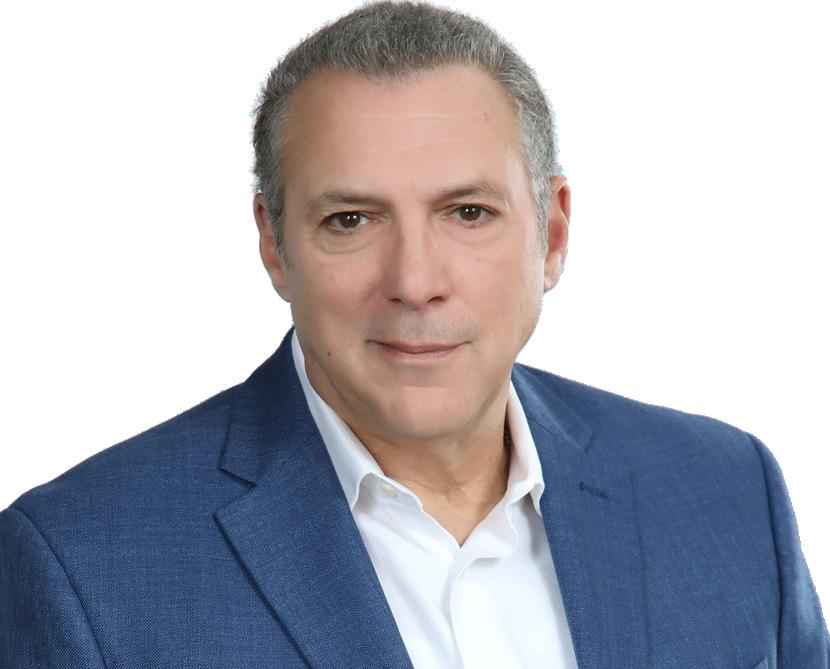
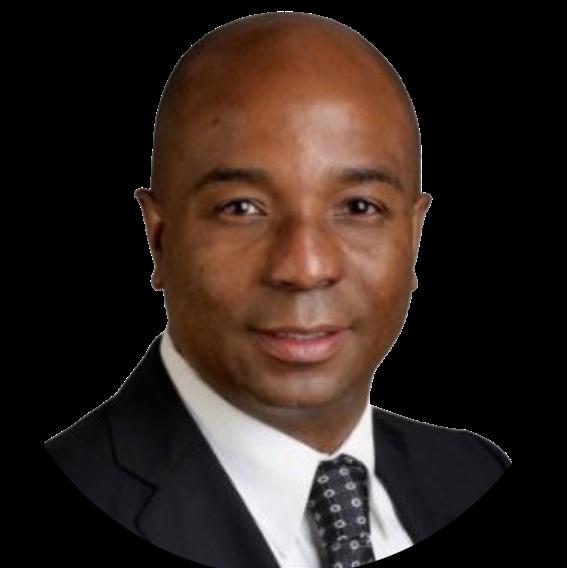

His customers value the fact that all functions are performed on American soil. Those that do choose to venture offshore should know that there are risks.
Access to information, audits, different regulations and language barriers are just a few.
“You also have kind of a systemic risk that if too many people put too many of their important functions in outsourced companies and they have a problem,” Brody, the regulatory compliance attorney, points out. “It could be something unique to that country, the political regime, it could just be the fact that they have a bad business or something goes wrong. How do you
32 MORTGAGE BANKER MAGAZINE | OCTOBER 2023
James Brody Senior Partner Garris Horn LLP
Paul Campbell Founder Equilibrium Mortgage Solutions
Joseph Amoroso Vice President of Business Strategy and Development, Universal Component Lender Services
deal with that when the laws, the political environment and the economic conditions of a different country are much less within your control? Concerns with data privacy and cyber security are associated with outsourcing issues.”
In an industry like mortgage banking, where many regulations govern business, it can be challenging to transfer operations overseas.
“Try to balance that,” Brody says. “The cost savings and the efficiencies against what your risks are, because one big problem could be a challenge that some companies may find insurmountable.”
One of the common issues his firm handles are data breaches. “If there’s a malware attack, normally the first thing you want to do is segregate off the databases and do an audit to figure out how that breach happened, what information was released and who it could have gone to.”
Countries have differing regulations pertaining to who needs to be notified in
these cases.
“At the end of the day, I think it’s going to be more about how better to manage those risks internationally from the political side, making it easier to work with other countries and have set standards to allow, for instance, the regulators who have concerns about access to third-party vendors, to oversee them, to run those audits,” Brody says.
IT COMES DOWN TO THE SAME ISSUES
Areputation for poor service can be devastating no matter the locale.

“It’s a time when loan officers and companies are searching for ever-creative ways to bring in the dollars and more competition,” Brody says. “Hopefully that would be a race to the top with quality of service, better handling of consumers’ concerns. But when you also
have this type of competitive environment and problems, you also have a lot of people come out of the woodwork who don’t care about you.”
When he’s speaking to lenders at conferences about risk management, the reception is cautiously appreciative. “When you have a room of people who have competitors sitting next to them, they don’t always want to share their stories or ask the questions that would belie the problems that they’re facing. But in this industry, everyone’s facing the same challenges in one form or another.”
Groups like The Mortgage Collaborative provide places for mortgage pros to network, problem-solve and trade industry secrets.
“The more that people share, the more you realize that they’re all having the same issues somehow, in some way,” Brody points out. “Just some companies are better able to address those from a financial capital investment perspective.”
MORTGAGE BANKER MAGAZINE | OCTOBER 2023 33
“There’s a certain element of reputational risk that a lender may have by saying, yes, we outsource overseas. Some Americans take it very seriously and I think that a lot of borrowers take it very seriously.”
> Joseph Amoroso






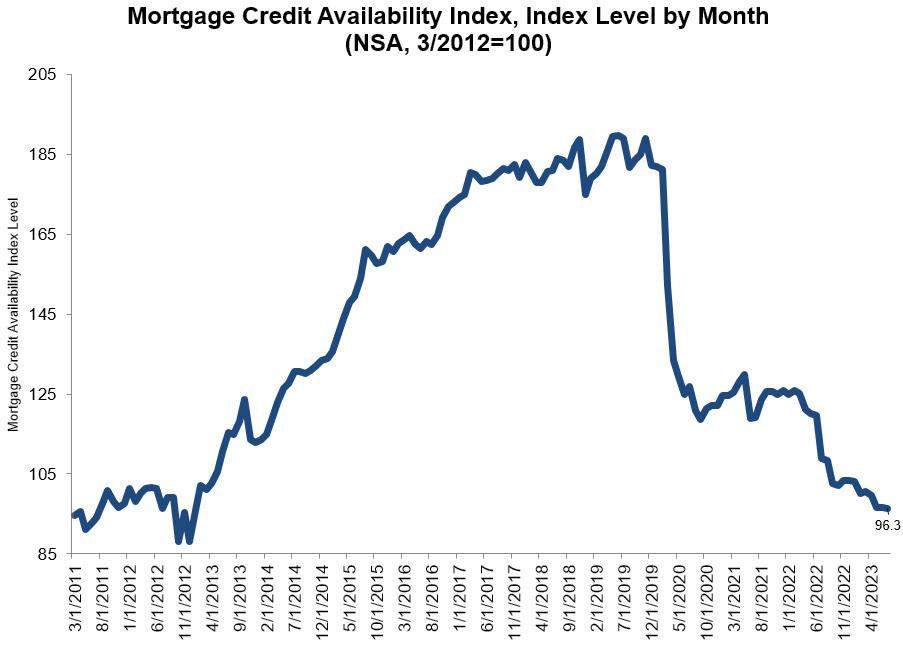

34 MORTGAGE BANKER MAGAZINE | OCTOBER 2023 MortgageBanker MAGAZINE


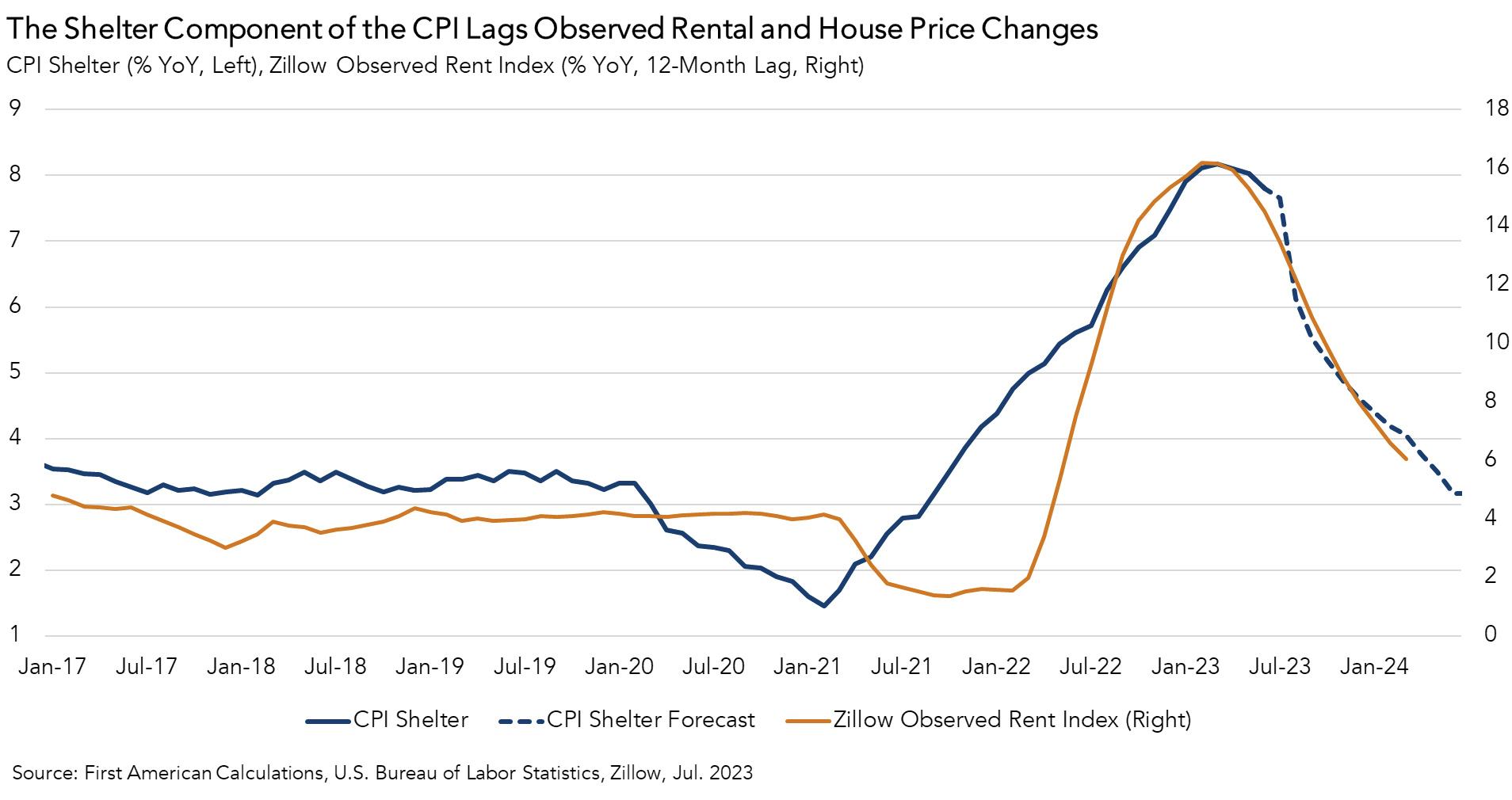



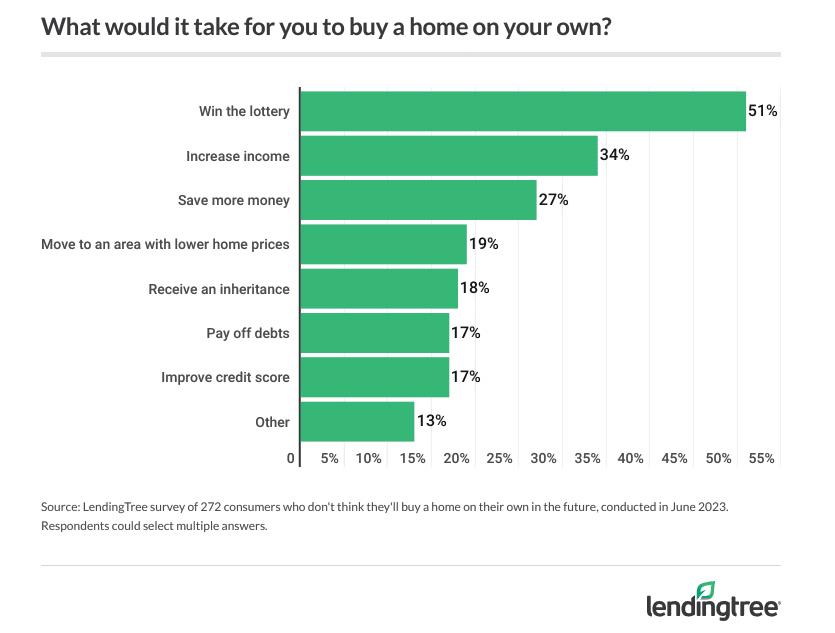


MORTGAGE BANKER MAGAZINE | OCTOBER 2023 35 DATABANK
MORTGAGE BANKING of




In this issue, Mortgage Banker Magazine highlights the women who are making an impact. We recognize and honor the Powerful Women of Mortgage Banking — it’s important for women to see women leaders within the industry, especially in areas where they may not expect to see them in great numbers, such as technology, finance and the c-suite.
See the women who are moving the needle by setting an example, holding the door open for their peers and the next generation of powerful women in mortgage banking. Meet the powerful women who have blazed the path and left their mark on the industry for years to come.

2023
36 MORTGAGE
2023
BANKER | OCTOBER
Kim Callas
Executive Vice President, Chief Operating Officer CMG Financial
What advice would you give to a younger you if possible?
I’m a complete worrier. For a long time, I worried and overthought EVERYTHING – to the point where it would affect my health. If I could, I would tell the younger me that worrying doesn’t solve any problems. It keeps you stagnant. And I would say, instead of staying stagnant with those worries, learn how break those thoughts down and use them to move forward and solve problems.
What steps can women take for better career stability?
Growing up, women are generally taught “not disrupt the peace,” to comply, keep quiet, and essentially make yourself what others want you to be. Therefore, I’ve found that many women – especially younger women who are earlier in their careers – have a harder time advocating for themselves. Advocating for yourself isn’t something we’ve been taught growing up –whether it be by society, parents, guardians, etc. But don’t be afraid to speak up, stand out, and

stand up for yourself. Women don’t advocate on behalf of themselves enough. It can be hard to learn but it’s a useful skill that will go a long way in your career.
What are the main problems that women in the industry are facing today?
From my perspective, two main problems are lack of representation and outdated stereotypes. When I walk into a room, I’m surrounded by men. There is a severe lack of women’s perspectives missing industry wide.
What significant changes would you like to see in 2023 for women in the mortgage industry?
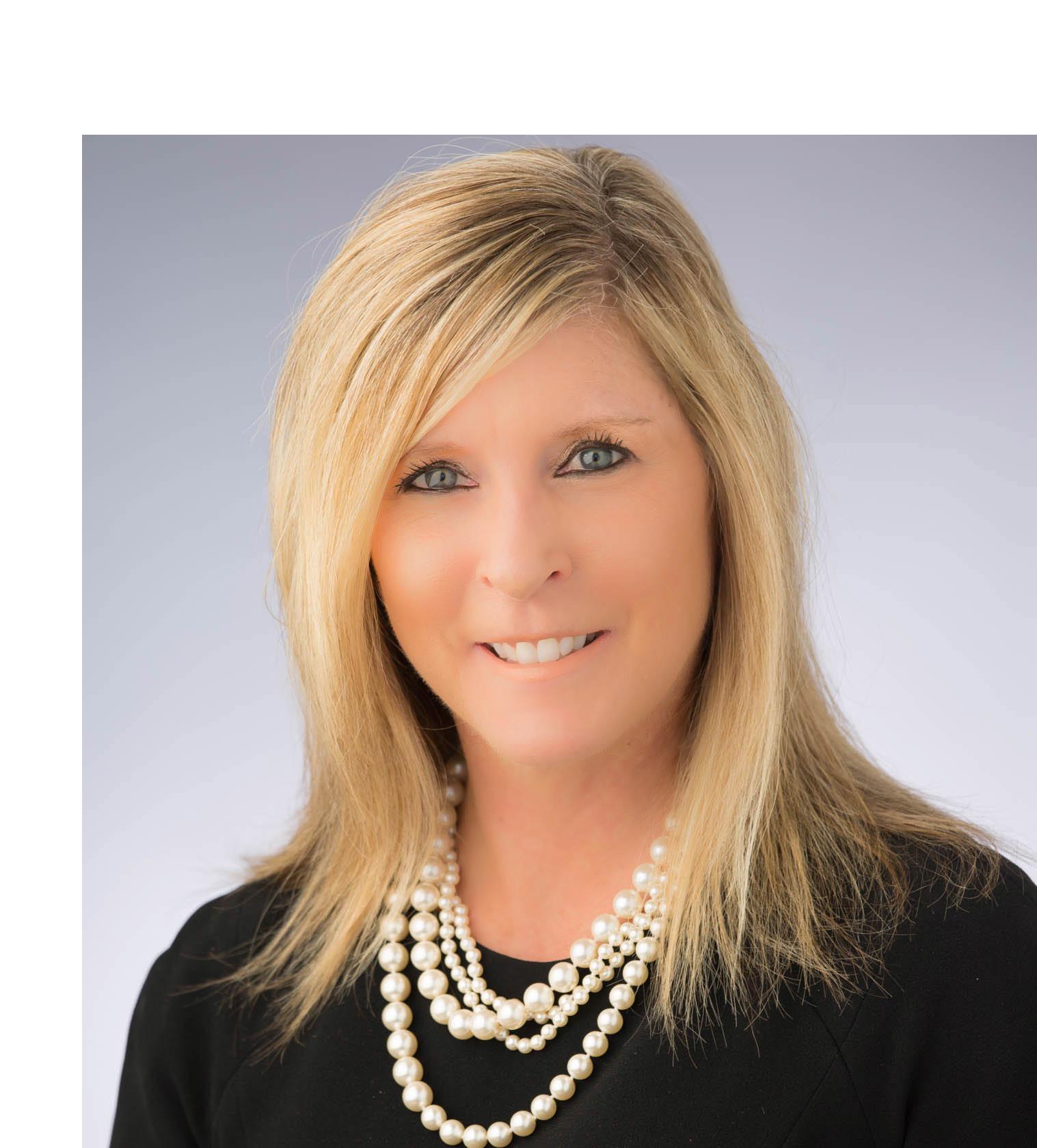

I would like to see the room at a 50/50 split –more women in C-level roles, executive roles, and higher. How do we accomplish it? Though it’s not fully dependent on this, it would help tremendously if the industry had more men like Chris George who advocate, support, and promote women all the way up to executive leadership. We need to look at things with a broader prospective.

OF MORTGAGE BANKING 2023
MORTGAGE BANKER MAGAZINE | OCTOBER 2023 37
Sandra Estrella
President and Co-Founder
Aequalend


What advice would you give to a younger you if possible?

As a first-generation, Latina, college graduate, you’re about to enter a world where your unique perspectives and values will be your compass and advantage. While you studied to become a teacher, the skills to educate and communicate are essential in this industry, making you uniquely positioned to connect with clients and colleagues. In your early years, you’ll feel shy and unsure. Every unasked question is an opportunity lost. The industry, and world, needs to hear from you. Speak up, not just for yourself, but for others who might be feeling similar hesitations. In the beginning, the paths might seem limited - defined by the few professions you’re familiar with. Dream beyond those boundaries. Believe it or not, one day you’ll be the co-founder of your own mortgage company, shaping the industry’s landscape. Embrace every high and low - they’re stepping stones to the mortgage banker, powerhouse you’ll become.
How close are we to a place where gender is not a distinction in mortgage banking?
In my 20+ years in mortgage banking, there’s been undeniable progress. However, there remains work
to be done. Women, especially women of color like myself, still find themselves underrepresented in leadership roles and can face distinct challenges. The silver lining is the increasing acknowledgment of this disparity and the collective effort towards change. Achieving a landscape where gender isn’t a distinction will require continued dedication to inclusivity, mentorship, and active dismantling of biases.
What are the main problems that women in the industry are facing today and what have you done to address or resolve them?
As president and co-founder of my company, I’ve: Promoted Diversity: Championed the hiring and promotion of diverse talents, ensuring leadership reflects the industry’s richness.

Introduced Flexible Work Policies: To support work-life balance and recognize the varied roles women often juggle.
Embraced Mentorship: I’ve both sought guidance and mentored budding professionals. Committing to the future, I plan to continue mentoring women eager to flourish in our space, amplifying voices, and forging paths.
OF MORTGAGE BANKING 2023
38
MAGAZINE | OCTOBER 2023
MORTGAGE BANKER
Jessica Evett
Vice President, Product and Software Delivery Cloudvirga

What advice would you give to a younger you if possible?
The old adage “The ones that mind don’t matter and the ones that matter don’t mind” sticks out. If you find yourself toning down who you are at your core or taking up less space in the room to be tolerated, you’re in the wrong place. Too often, women receive well intended but horrible advice at the start of their careers about how to exist in a corporate setting. The truth is this: Be yourself. Truly. You’re there for a reason and your ideas, experience, and expertise matter. Authenticity matters and cultures that embrace that are where you want to be.
How close are we to a place where gender is not a distinction in mortgage banking?
We still have a way to go, but things are improving. I’ve worked at firms that value diversity and have seen women in senior leadership roles. But that presence was intentional and prioritized by the organization. Leadership positions at the middle tier and operational level seem to have a higher female presence, but senior executive positions
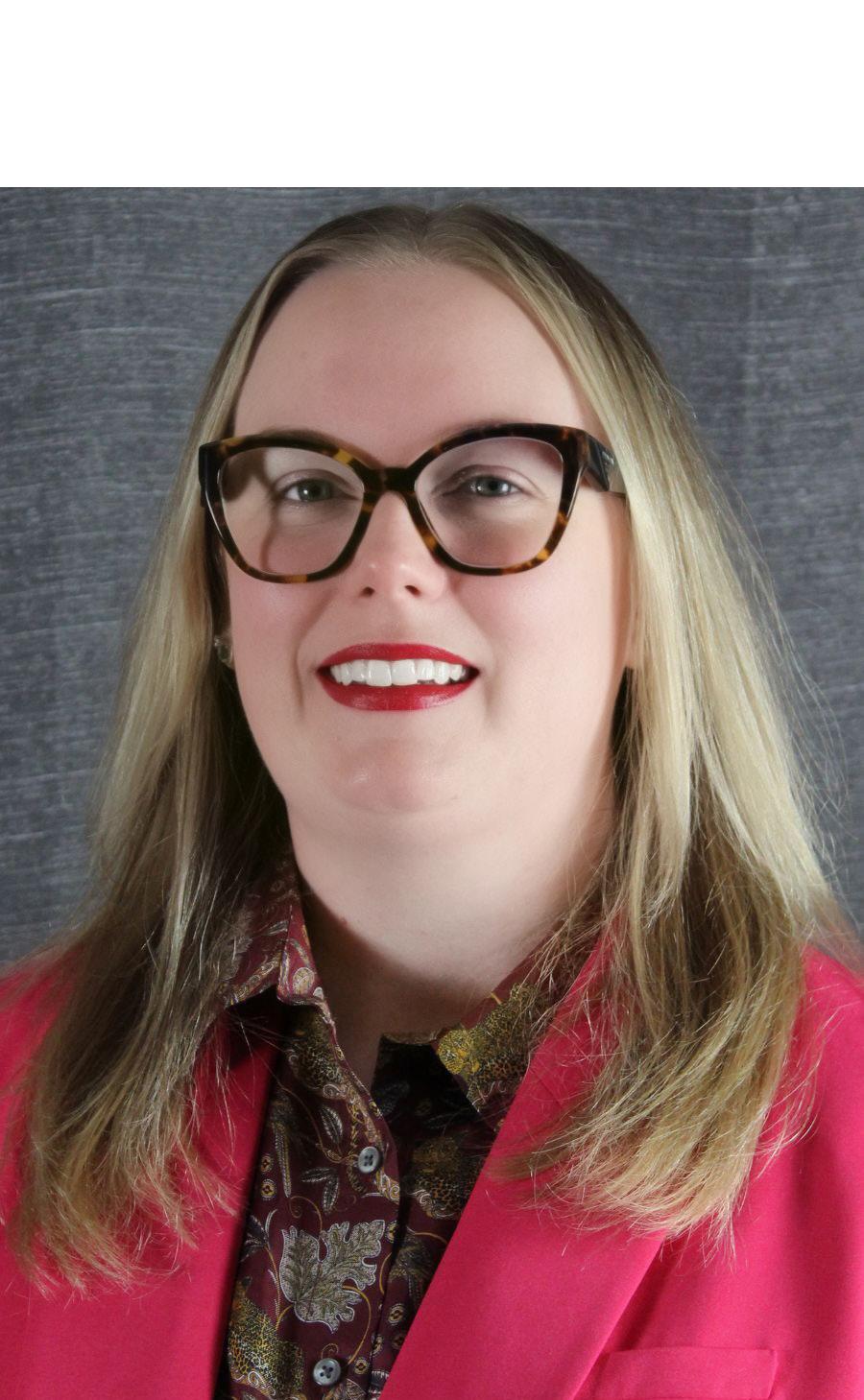

and c-suite representation is light. We are no longer a substantial minority in the workplace and the distribution of leadership still lags behind our representative presence in the workforce. More work is needed for leadership to be a reflection of the female footprint in the industry.
What significant changes would you like to see in 2023 for women in the mortgage industry? Opportunities to show up for other women and an easier way to find them. I would love to see a partnership across organizations and industry trade groups focused on a more cohesive strategy to secure emerging female talent. What can we do in universities to grab the next finance guru, market analyst, or mobile development innovator? How do we hold ourselves accountable to expanding our reach and effectiveness at recruiting and hiring? How do we then stay in contact with the women we find through ongoing mentorship, sponsorship, and allyship? A formal approach with stated goals and a method to stay in connection would be amazing. When we organize and go after something, we achieve it!

OF MORTGAGE BANKING 2023
MORTGAGE BANKER MAGAZINE | OCTOBER 2023 39
Pamela Hamrick
President Incenter Diligence Solutions


How close are we to a place where gender is not a distinction in mortgage banking?
We’re making excellent progress. The many women who have risen to the top, and are elevating other women, are accelerating our momentum. Becoming “the best” in our fields also makes gender distinctions irrelevant. As President of Incenter Diligence Solutions, I’m keenly aware of the pressures on mortgage executives to seize new growth opportunities while assuring that no regulatory requirements are being overlooked. The stakes are too high for gender to influence a client’s decisions about a diligence partner.
What steps can women take for better career stability?
I would recommend that they cultivate several traits—curiosity, an eagerness to develop and improve, a willingness to try out every facet of the mortgage industry, and then a focus on excelling in some specialized areas. Before I joined Incenter Diligence Solutions, I was Senior Vice President of Operations for Lending.com and First Financial Services, where I oversaw a wide range of functions, from processing and underwriting to compliance and disclosure. I wouldn’t have been able to handle

this without learning the industry, and particularly operations, from the ground up over time. Being collegial, team-oriented, empathetic, and trusting are equally important. Great women leaders know that when their teams succeed, so do they. They also seek out mentors even after they have risen to the top. There is always more to learn.
What are the main problems that women in the industry are facing today and what have you done to address or resolve them?
In the mortgage industry, as in other professions, the disparity between men and women remains striking—especially at the senior levels, which are male dominated. I’m very encouraged by the efforts of organizations like the Mortgage Bankers Association to address this—in MBA’s case, through their mPower program.
I’m proud that our parent company, Incenter, is championing efforts to advance women as well as a more diverse industry. Incenter is a family of companies focused on improving lenders’ operational and financial performance. Currently, two-thirds of our firms have a woman president.

OF MORTGAGE BANKING 2023
40 MORTGAGE BANKER MAGAZINE | OCTOBER 2023
Denise James
SVP, Quality Control and Fraud Solutions Xactus



How close are we to a place where gender is not a distinction in mortgage banking?
The industry has made progress in recognizing women as key contributors in roles typically held by men. Recent changes whereby women are being placed in top positions has strengthened the industry. It’s evidence that we are just as capable at defining the necessary evolutionary requirements and implementing successful strategies to grow a significant economic sector within our country – the mortgage/housing market. We should no longer be in awe of women that are trusted to lead organizations of any size. We should simply respect them.
What steps can women take for better career stability?
Women should not feel limited by what they can achieve. The mortgage industry is no different than any other in that we should seek growth and advancement based on merit. Education is key. Being open to receiving and understanding different perspectives is a great way to formulate ideas for achieving better results, no matter the
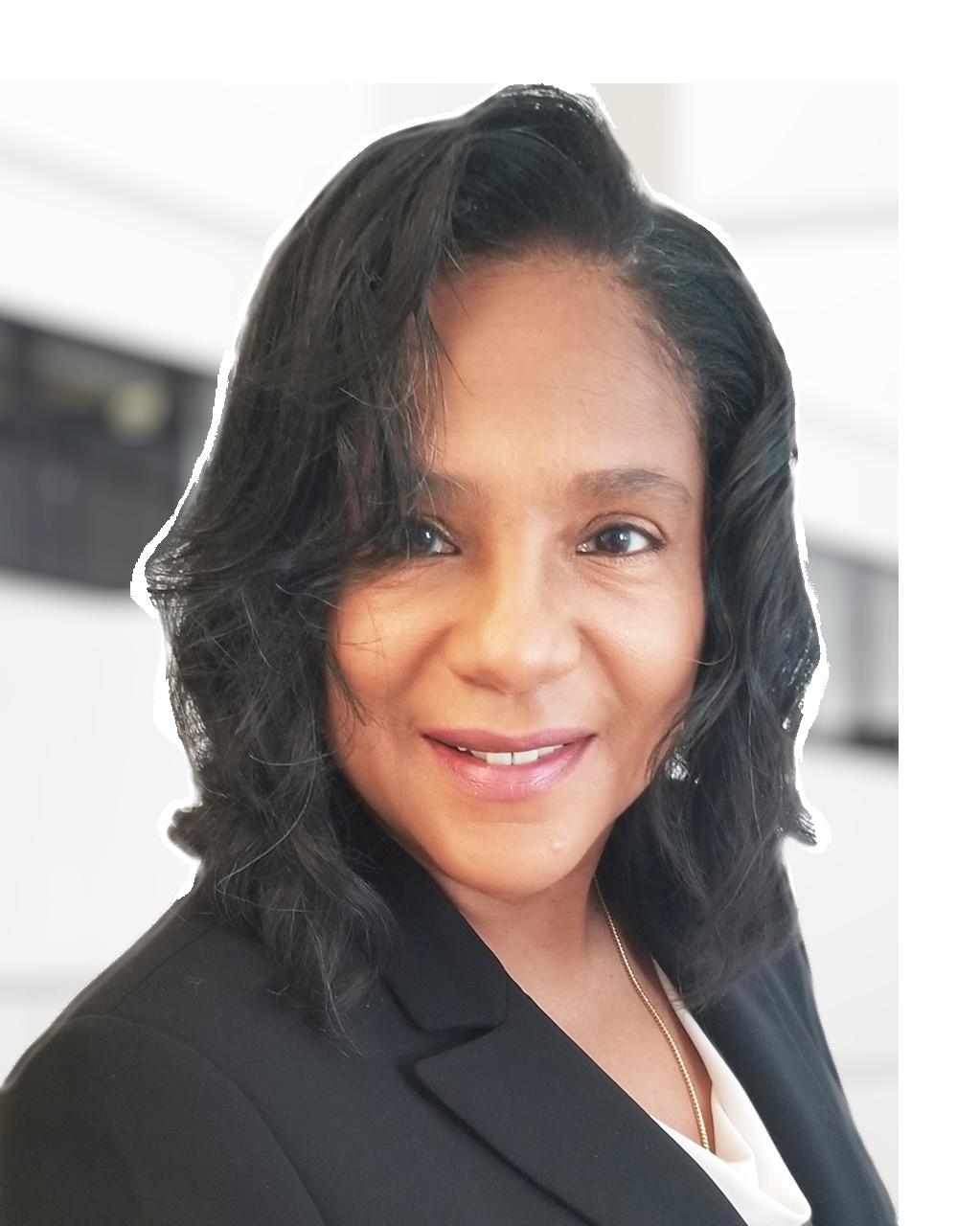
goal. As a founder of a business that served the mortgage industry, I can honestly say that most women feel that control over one’s career can only be achieved via entrepreneurship. That’s not the case. Good mentorships can open doors and present opportunities to be placed in positions where you can learn and grow alongside other successful leaders.
What are the main problems that women in the industry are facing today and what have you done to address or resolve them?
As women, I believe that we are still held back from pursuing greater achievements due to the residual stigmas of male-dominated roles in the industry. We must continue our pursuit of advancing objectives with “shatter the status quo” diligence. We continue to face limited exposure in tech-driven organizations. My organization, Xactus, is led by a woman. Serving as president, she is setting a new benchmark for women like me that can envision a broken “glass ceiling.” I am very proud of that and look forward to doing the same for other professional women in the industry.
OF MORTGAGE BANKING 2023
MORTGAGE BANKER MAGAZINE | OCTOBER 2023 41
Cara Krause
VP Regional Sales-Northeast Mortgage Capital Trading

Cara Krause was nominated for her significant contributions to the mortgage banking industry, standing out with her exceptional impact and achievements. Her impressive portfolio of over 65 clients, bringing on more than 35 within the last five years, is a testament to her client acquisition skills.

What truly sets her apart is her personalized approach to client engagement and management. She goes beyond providing services, striving to understand each client’s unique needs, and delivering tailored solutions in conjunction with an educational hands-on approach.
Cara’s influence extends beyond her immediate clientele. She actively shares her knowledge and expertise with peers, elevating industry standards and promoting best practices. Her dedication to community involvement and mentoring further exemplifies her positive influence on the people around her.
Through her commitment to excellence, outstanding client acquisition, and positive impact on the industry

and community, Cara emerges as a true trailblazer in mortgage banking.
What advice would you give to a younger you if possible?
Continue to have and set goals. Stay focused on your objectives.
How close are we to a place where gender is not a distinction in mortgage banking?
I feel we are here. If you work hard, cultivate relationships and be genuine, opportunities will materialize.

What steps can women take for better career stability?
Always be eager to learn and cross train. Continue with education, stay open minded, make networking a priority and don’t let anyone dissuade you from your chosen career path.
OF MORTGAGE BANKING 2023
42 MORTGAGE BANKER MAGAZINE | OCTOBER 2023
Mae Mackey

SVP - Production Management Sun West Mortgage Company

What advice would you give to a younger you if possible?
I would tell my younger self to never to give up especially when life gets tough because tomorrow breeds new opportunities to become a better version of yourself. I would also tell her to steer clear of complacency and instead embrace change with an open mind.
How close are we to a place where gender is not a distinction in mortgage banking?
I am so happy that we are so much closer to a time where gender is not a prevalent distinction in mortgage banking and I think much of that has to do with women proudly and competently taking the reigns as more than capable leaders to continue who are moving our profession forward. I also believe the use of AI is only going to help further bridge that gap.
What are the main problems that women in the industry are facing today and what have you done to address or resolve them?
The main problem is a significant number of


mortgage bankers are still male. More effort needs to be made to reach out to young girls and share what a career in this field looks like and how it can be accommodating to a balanced lifestyle inclusive of family and work. As a former high school teacher, I’ve been asked to speak at career day events and often have conversations with young people about my role at Sun West that includes my love of teaching which I still do when training people how to use our free personal assistant AngelAI.
What significant changes would you like to see in 2023 for women in the mortgage industry?
I would love to see more women publicly acknowledged for the pivotal role they play in shaping this industry. I think far too often success in mortgage is defined by number of closings and women who close hundreds of thousands or even in the millions are easily identified and should be honored but many women are also making an important mark in operations, policy, technology and community relations which is as equally valuable.
OF MORTGAGE BANKING 2023
MORTGAGE BANKER MAGAZINE | OCTOBER 2023 43
Candice McNaught
SVP of National Sales Supreme Lending

What advice would you give to a younger you if possible?
Advice that I would give to my younger self and even to today’s youth is to gain a better understanding of financial literacy early on, which is lacking in high school education. The younger you learn how to balance budgets and manage credit, the easier it will be to maintain healthy finances in the long-term. Additionally, have a clearer picture of what you want to do in the future and specialize in. This guides your career path with more laser focus.
How close are we to a place where gender is not a distinction in mortgage banking?
I believe we’re already there. People are born leaders. Today, gender does not define who can and will be successful. I would say women now have more opportunities in the mortgage industry and companies are fighting harder to keep their women employees.
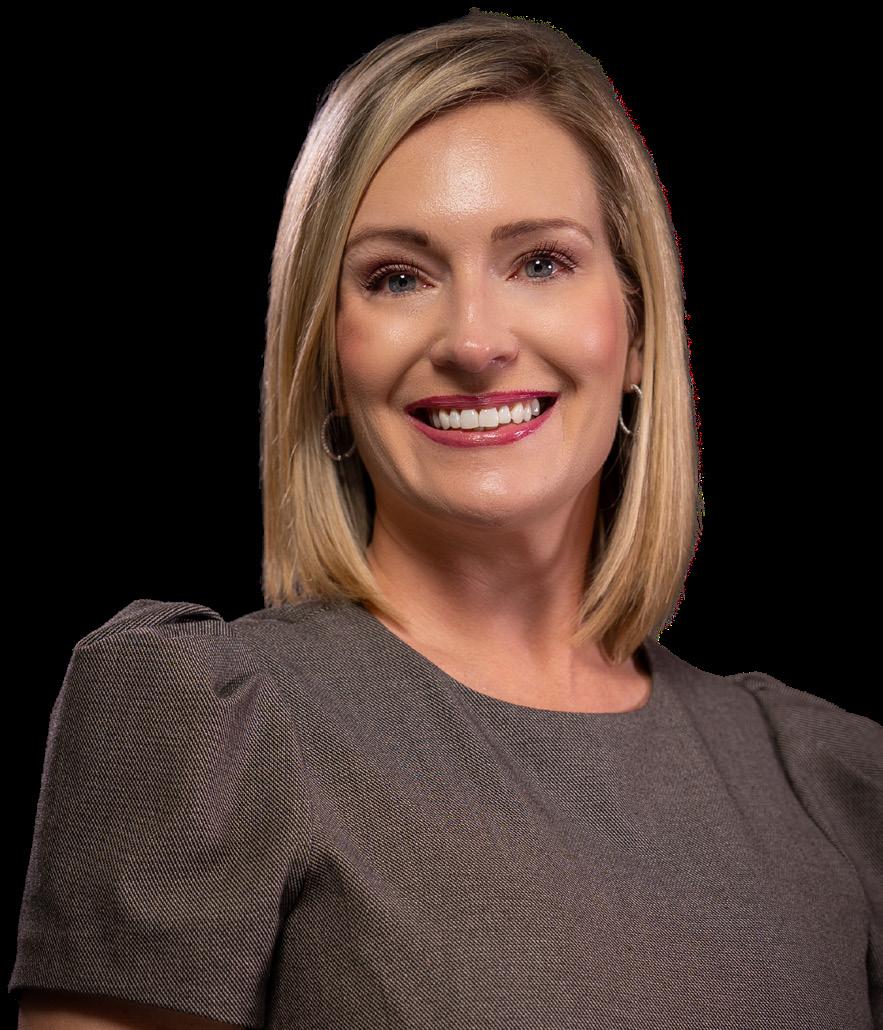
What steps can women take for better career stability?

Never stop learning, never stop growing, and never stop networking. It’s important to emphasize building relationships beyond just your current
position and organization. Be committed and dedicate time to creating your own relationships and network. Join associations, be actively involved in your community, connect with like-minded professionals, and stay actively engaged with your network. Celebrate each other’s wins and offer support. Nurturing your personal and professional networks contributes to career stability as well as individual development and growth.
What are the main problems that women in the industry are facing today and what have you done to address or resolve them?
In my experience, women are no longer struggling in mortgage. Women are actually outpacing men in the market and are more desirable for companies to recruit. At Supreme Lending, our women employees are making a tremendous impact in the company and moving up the ladder— from operations and support staff to originators across the country. Women have become more confident in the industry and are truly trailblazers. The qualities, determination, and strengths women bring to their jobs and teams are helping drive the industry forward. I’m excited to see the next generation of leaders.

OF MORTGAGE BANKING 2023
44 MORTGAGE BANKER MAGAZINE | OCTOBER 2023
Shawnda Merriman
Managing Director, Post Purchase Operations Redwood Trust
What advice would you give to a younger you if possible?
Do not be afraid of change. Life will always change. Change is necessary for us to move forward and encourages our development. Embrace it and accept you cannot control everything.
How close are we to a place where gender is not a distinction in mortgage banking?

While there has been progress, women are still dramatically underrepresented in the mortgage banking sector. Women generally have a higher representation than men in entry-level positions but that drops off measurably at the senior and C-suite levels. I believe the real work needs to happen in creating opportunities and support for women to make the leap from entry-level to management jobs.
What steps can women take for better career stability?
I recommend taking steps where you are in the driver’s seat of your career. A few I have employed in my career journey include saying yes to new
opportunities, being visible, projecting confidence in your area of expertise, and diversifying your skills.

What are the main problems that women in the industry are facing today and what have you done to address or resolve them?
From my vantage point, gender bias remains the number one problem women face with career advancement. Personally, I try to be a strong advocate for the women in my workplace every chance I get. I also play an active role in our company’s employee resource group TogetHER which focuses on professional development and visibility of women’s work within the organization.
What significant changes would you like to see in 2023 for women in the mortgage industry?

There are many changes desperately needed. If I were to pick my top two, it would be setting criteria for employers to be held to a standard of equal pay for equal jobs and affordable, high-quality childcare programs.

2023
MORTGAGE BANKER MAGAZINE | OCTOBER 2023 45
Tara Pettersen
Chief Risk and Compliance Officer CMG Financial
What advice would you give to a younger you if possible?


I would tell my younger self to have confidence and promote yourself. Be your own advocate. The answer will always be no if you do not ask the question.
How close are we to a place where gender is not a distinction in mortgage banking?
When I started in the industry, the bank I worked for had just recently discontinued women wearing uniforms, so from that perspective we have come a long way, BUT there is still a lot of work to do and us women need to advocate for ourselves, pump each other up, from a simple “I believe Sara was still talking” when a women gets interrupted during a zoom call to being a mentor for someone in the company.
What steps can women take for better career stability?

This would go for anyone, stay relevant in your job, take webinars, and ask questions. Seek feedback from your leaders. Take pride in your work and deliver
quality work. Make sure you have good negotiation skills. Make sure to set boundaries. There have been times in my career that because I was the only women on a project I was asked to keep notes or “wrap up” everyone’s thoughts. This could be at a detriment to your career if you are doing others work and not your own. I have also had males take credit for my work. Be a team player for sure, but also make sure your value is known.
What significant changes would you like to see in 2023 for women in the mortgage industry? Mentorship programs, equal pay, opportunities, and diversity. I do believe men are becoming more advocates for their women coworkers especially when the man is a father to a daughter or has a spouse in the work force. As a minority women I do not want us to forget we also need to be advocates for minorities, LGBTQ, and those with disabilities in the work force. Women need to ensure they are allies for everyone not just other women.

OF MORTGAGE BANKING 2023
46 MORTGAGE BANKER MAGAZINE | OCTOBER 2023
Courtney Thompson
EVP, Head of Servicing CMG Financial, Inc.

What advice would you give to a younger you if possible?
Kurt Vonnegut aptly stated: We are what we pretend to be, so we must be careful about what we pretend to be. And this is the advice I would give young me. I spent so many years adapting who I was to the world, based on the expectations around me. But when you only consider fitting in and adapting to the world around you or doing as you are told – you will never be better than or expect more from yourself, than the world around you does.
How close are we to a place where gender is not a distinction in mortgage banking?
Never close enough – I think that the Industry has made great strides toward gender equity, representation, and inclusion, but we can’t celebrate until the fish is on the boat.
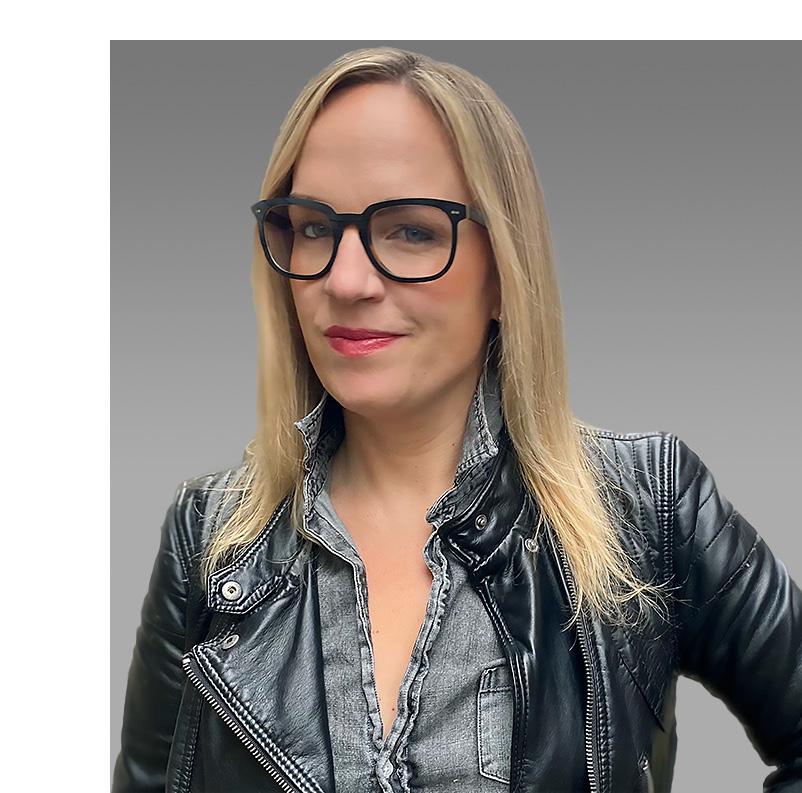

In my own experience, I’ve always had to seek female mentorship and guidance outside of the organizations that I’ve been lucky enough to be a part of. It is more often than not that I find myself

on a panel or in a Board Room with mostly male counterparts. However, I’ve also had amazing male leaders who always focused on my aptitude, capability, and capacity, not the fact that I was a woman.
What steps can women take for better career stability?
Not just women – but all humans—should always: Live in the house of hustle. There is no replacement for hard work, period. Meet your deadlines, keep your word, take an extra moment to say thank you, be an example to your peers, do good work, exercise, own your failures, don’t complain. Rinse. Repeat. Be willing to reject the ladder. Becoming the “next clear step” in your career path (aka climbing the corporate ladder), is not always the best answer. I’ve been in mortgage servicing for over 20 years but I’ve worn many different hats; it is in this diversity of perspective that I’ve really been able to grow as a member of the Industry AND figure out where my volcanic energy best exists.
OF MORTGAGE BANKING 2023
MORTGAGE BANKER MAGAZINE | OCTOBER 2023 47


48 MORTGAGE BANKER MAGAZINE | OCTOBER 2023 SPECIAL ADVERTISING SECTION: NON-QM LENDER DIRECTORY SPECIAL ADVERTISING SECTION: PRIVATE LENDER DIRECTORY COMPANY AREA OF FOCUS WEBSITE Alpha Tech Lending Private Lending, Non-QM alphatechlending.com Patch Lending Private Lending for Real Estate Investment Properties patchlending.com COMPANY AREA OF FOCUS STATES LICENSCED WEBSITE Arc Home LLC Multi-channel mortgage leader with exceptional service and comprehensive mortgage solutions. AL, AK, AZ, AR, CA, CO, CT, DC, DE, FL, GA, ID, IL, IN, IA, KS, KY, LA, ME, MD, MA, MI, MN, MS, MO, MT, NE, NV, NH, NJ, NM, NY, NC, ND, OH, OK, OR, PA, RI, SC, SD, TN, TX, UT, VT, VA, WA, WV, WI, WY business.archomellc.com Carrington Wholesale Private Lending for Real Estate Investment Properties 47 States (excluding NH, MA & ND.) carringtonwholesale.com Verus Mortgage Capital Nation’s largest issuer of securitizations backed by non-QM loans. Continental U.S. verusmc.com NMP’s mission is to use the power of video and podcasts to compliment the written word and inform, educate, enable and empower mortgage professionals with the most relevant, up-to-date information and advances in the mortgage industry. It is our goal to offer worthwhile information to our viewers while delivering it with the utmost professionalism. And … Action!
SPECIAL ADVERTISING SECTION: ORIGINATOR
COMPANY AREA OF FOCUS WEBSITE
Global DMS Appraisal Management Software globaldms.com
SPECIAL ADVERTISING SECTION: APPRAISER & AMC DIRECTORY

COMPANY AREA OF FOCUS WEBSITE
Clear Capital National real estate valuation technology company clearcapital.com
SPECIAL ADVERTISING SECTION: WAREHOUSE LENDING DIRECTORY
COMPANY AREA OF FOCUS WEBSITE
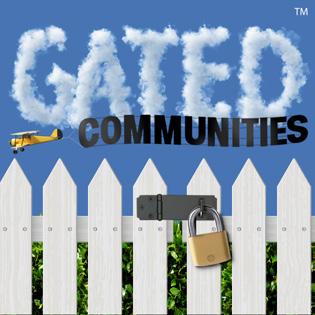
FirstFunding Inc. Offers warehouse lines to correspondent lenders, community banks, credit unions, and secondary-market investors. firstfundingusa.com
Independent Bank of Texas Mortgage warehouse lines of credit, from $2 million to $150 million, and fund over 200 delegated and non-delegated retail originators. Ifinancial.com
nmplink.com/TheInterest nmplink.com/ThePrincipal nmplink.com/GC
PRODUCTIONS OF AMERICAN BUSINESS MEDIA

MORTGAGE BANKER MAGAZINE | OCTOBER 2023 49
TECH
DIRECTORY
Discover Where Your Competitors Stand In The Mortgage Market
Adapting to today’s dynamic mortgage market has changed the way we analyze trends and track competitors. Luckily, we have the tools you need to determine your competitors’ market share and see how individual loan originators are performing in their market.

Mortgage MarketShare Module
Our Mortgage MarketShare Module provides real-time market insights on all lenders, helping you easily benchmark your company’s market share, identify new and emerging markets, and measure your sales performance against your competition.
Loan Originator Module
Our Loan Originator Module provides you with access to the largest and most comprehensive loan originator database in the country. Take advantage of this access to identify top-producing loan officers, verify production, and monitor competitors.
GET A FREE MORTGAGE COMPETITOR ANALYSIS
To show you just how powerful our modules are, we’re offering a free customized mortgage competitor analysis. Simply visit www.thewarrengroup.com/competitor-analysis and provide us with a few details. You’ll receive an updated 2021 vs. 2022 Quarterly Mortgage MarketShare Report at the company level paired with a Loan Originator Report highlighting top LOs and individual performance.
Visit www.thewarrengroup.com to learn more today!
Questions? Call 617.896.5331 or email datasolutions@thewarrengroup.com.
BENEFITS
• Monitor Residential and Commercial Lending
• Measure Sales Performance and Market Activity
• Identify High-Performing Competitors
• Uncover Emerging Markets and New Opportunities
• Pinpoint Top Loan Officers for Recruitment
• Identify and Verify Loan Originator Performance
• Measure Loan Activity Against Competition
• Highlight Success for Market Positioning
NEED MORE DATA?
Inquire about our NMLS Data Licensing and LO Contact Database options.



















































































 BY ERICA DRZEWIECKI , STAFF WRITER MORTGAGE BANKER MAGAZINE
BY ERICA DRZEWIECKI , STAFF WRITER MORTGAGE BANKER MAGAZINE
























































































